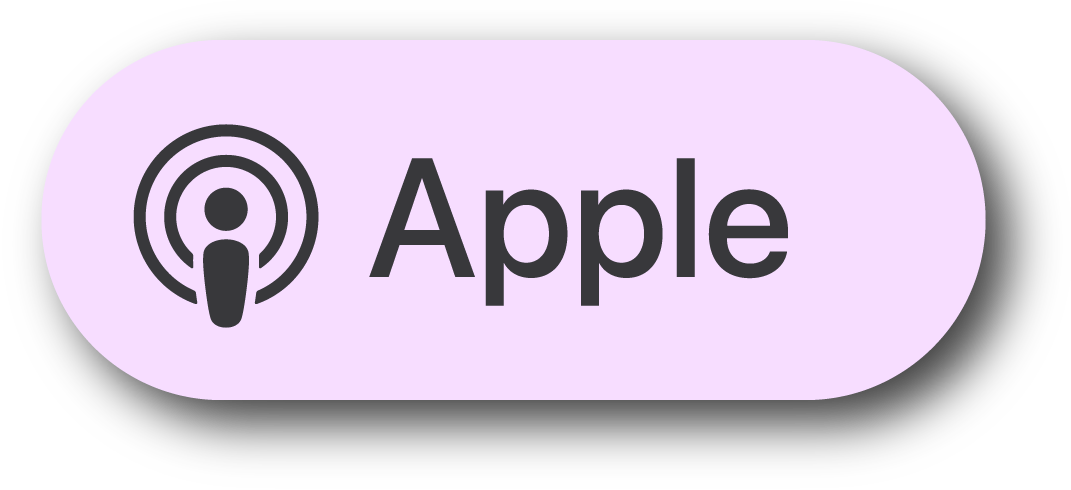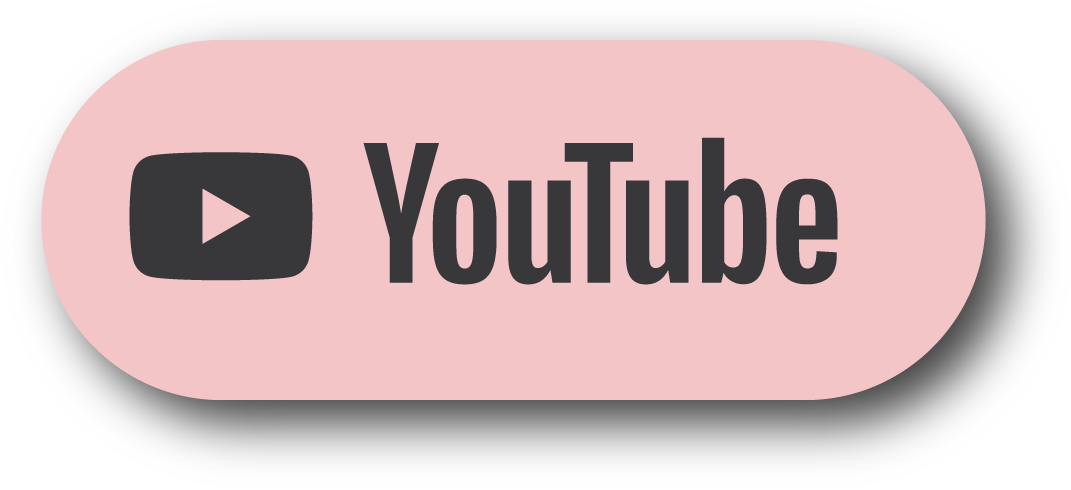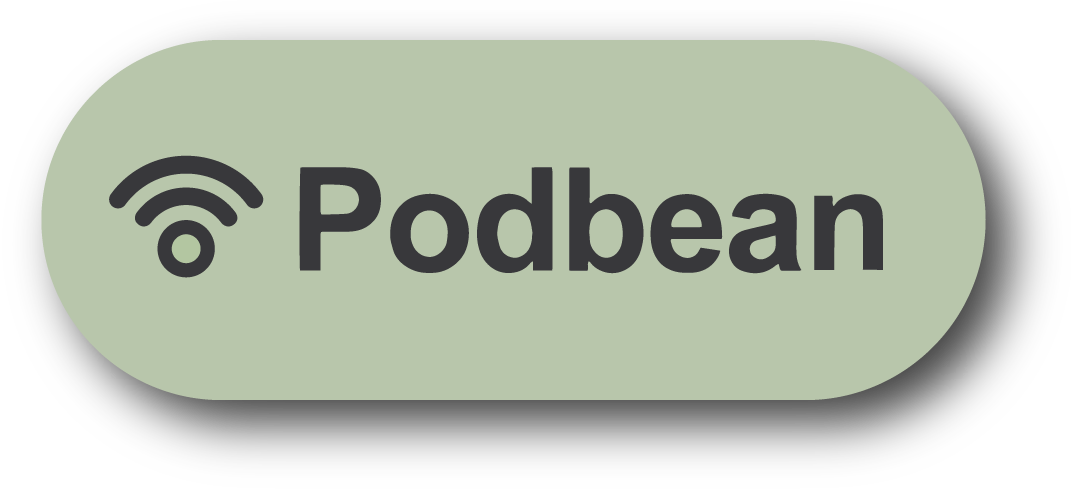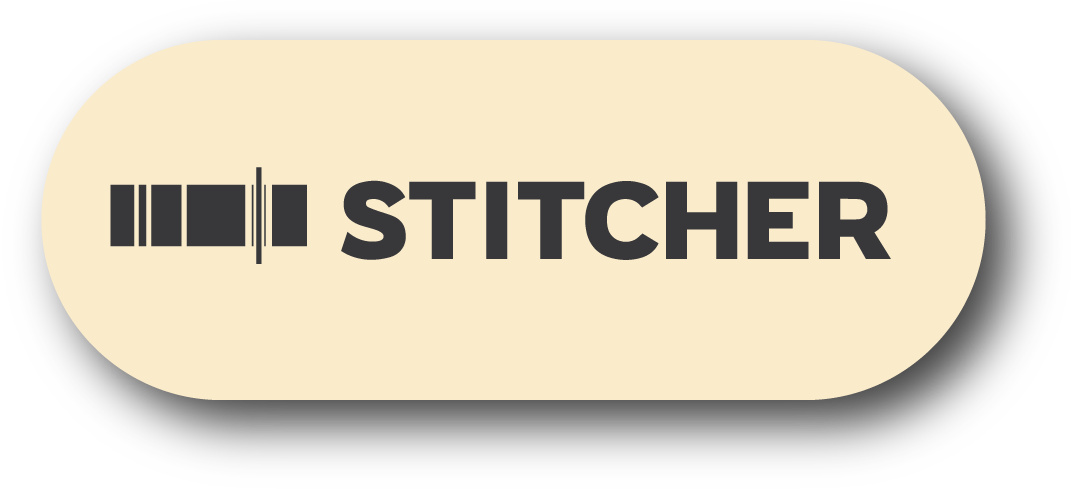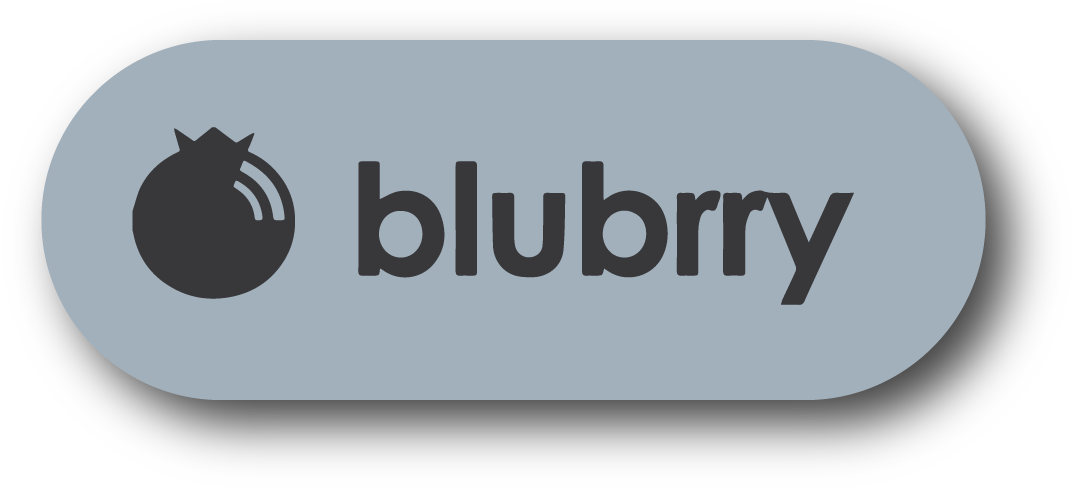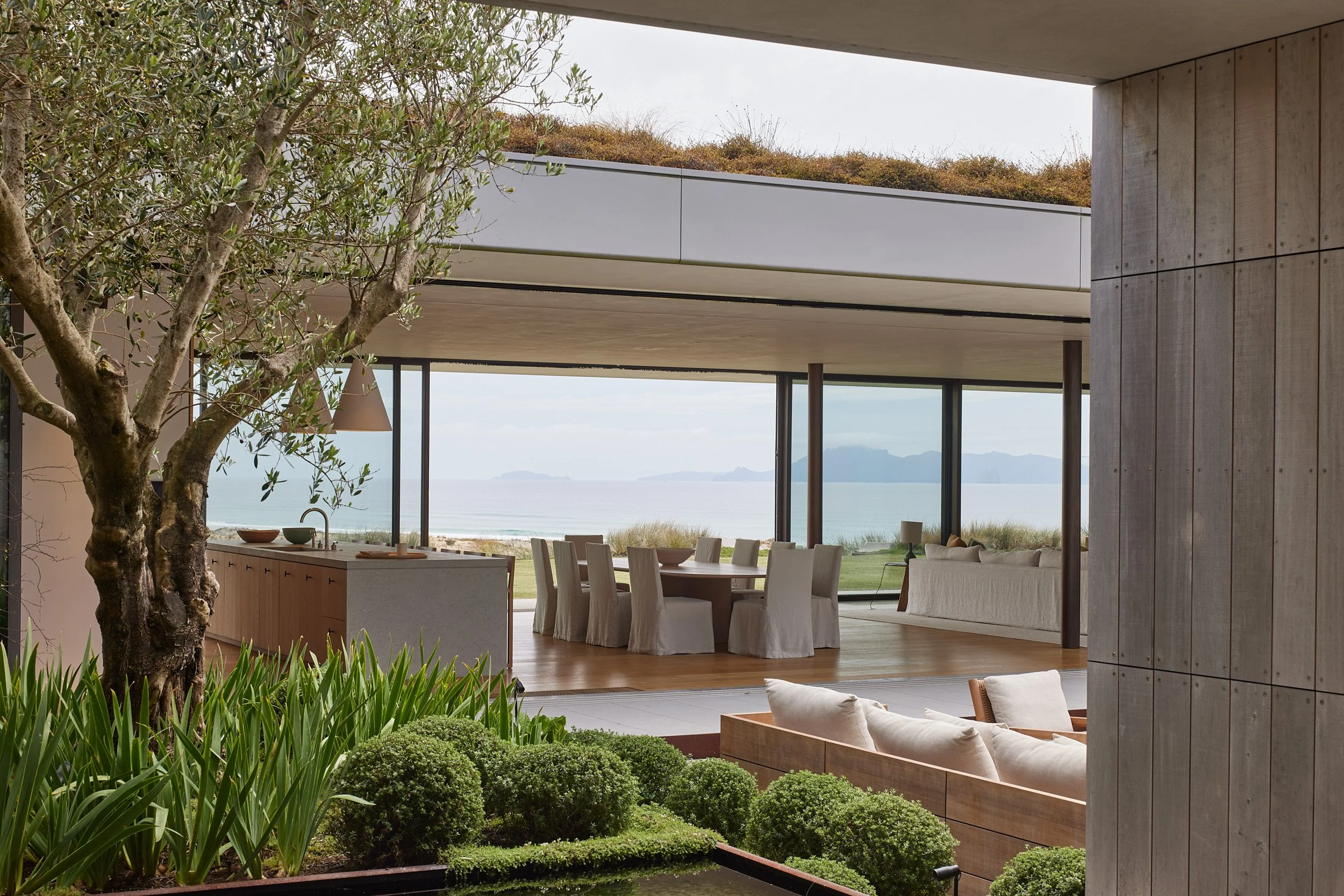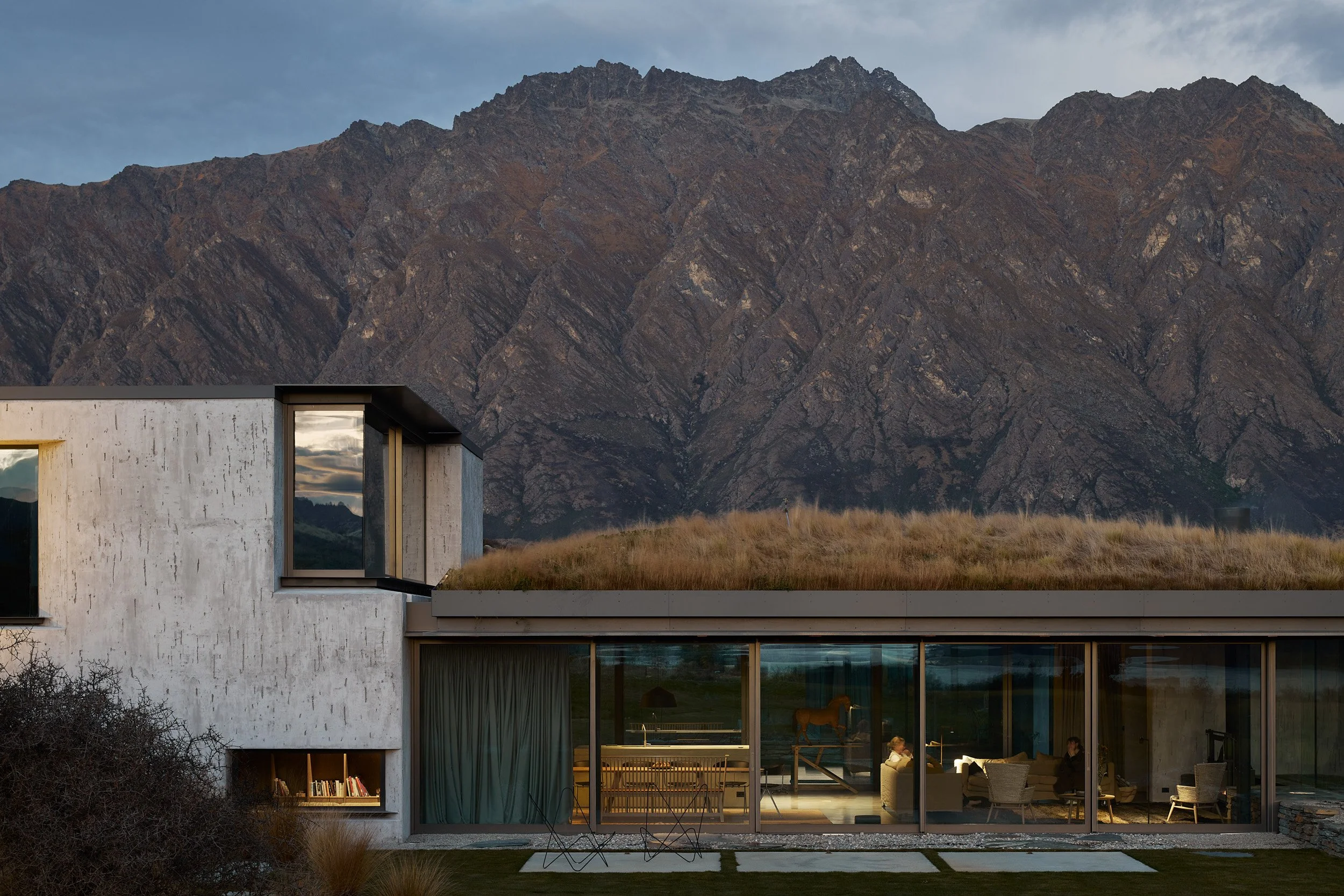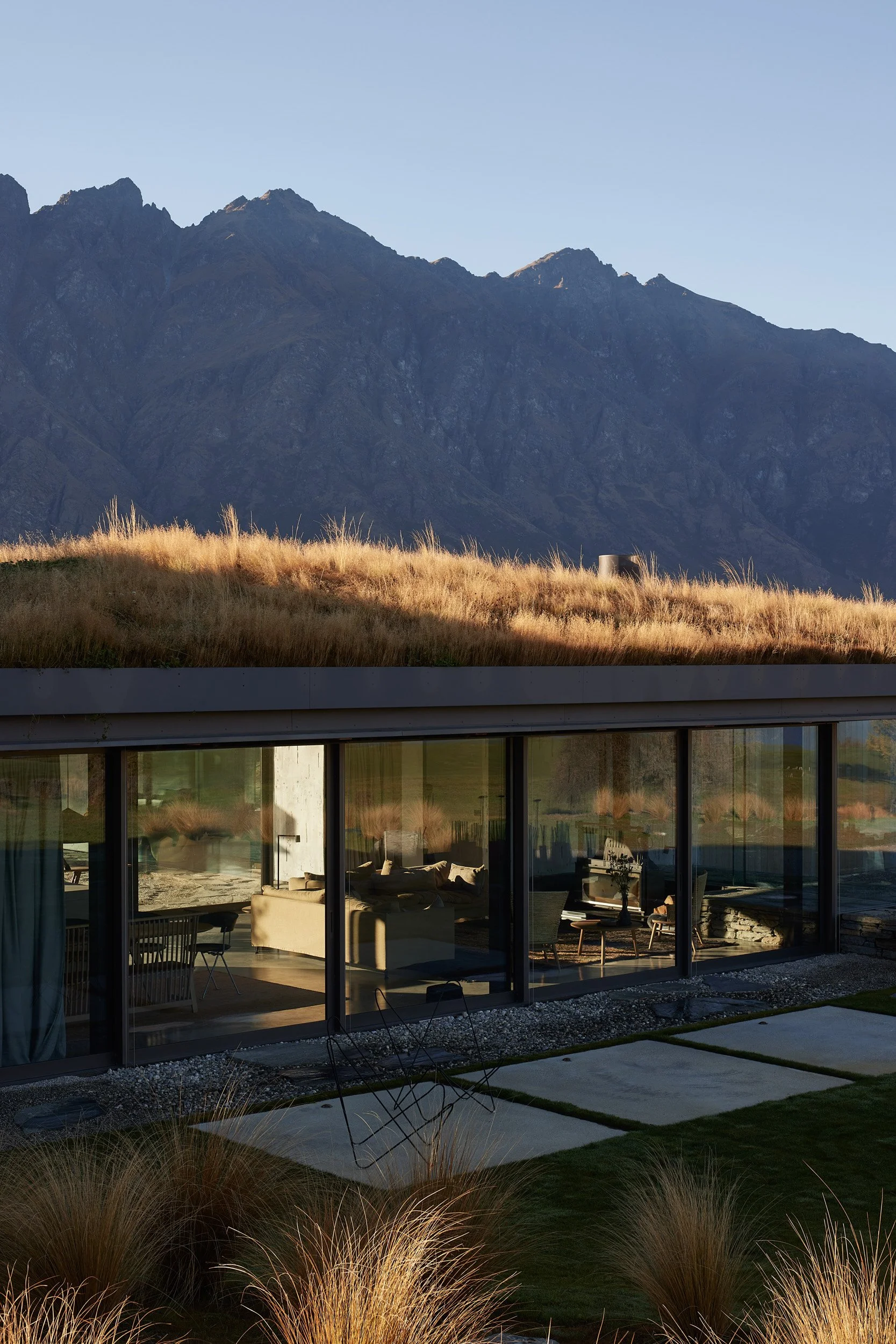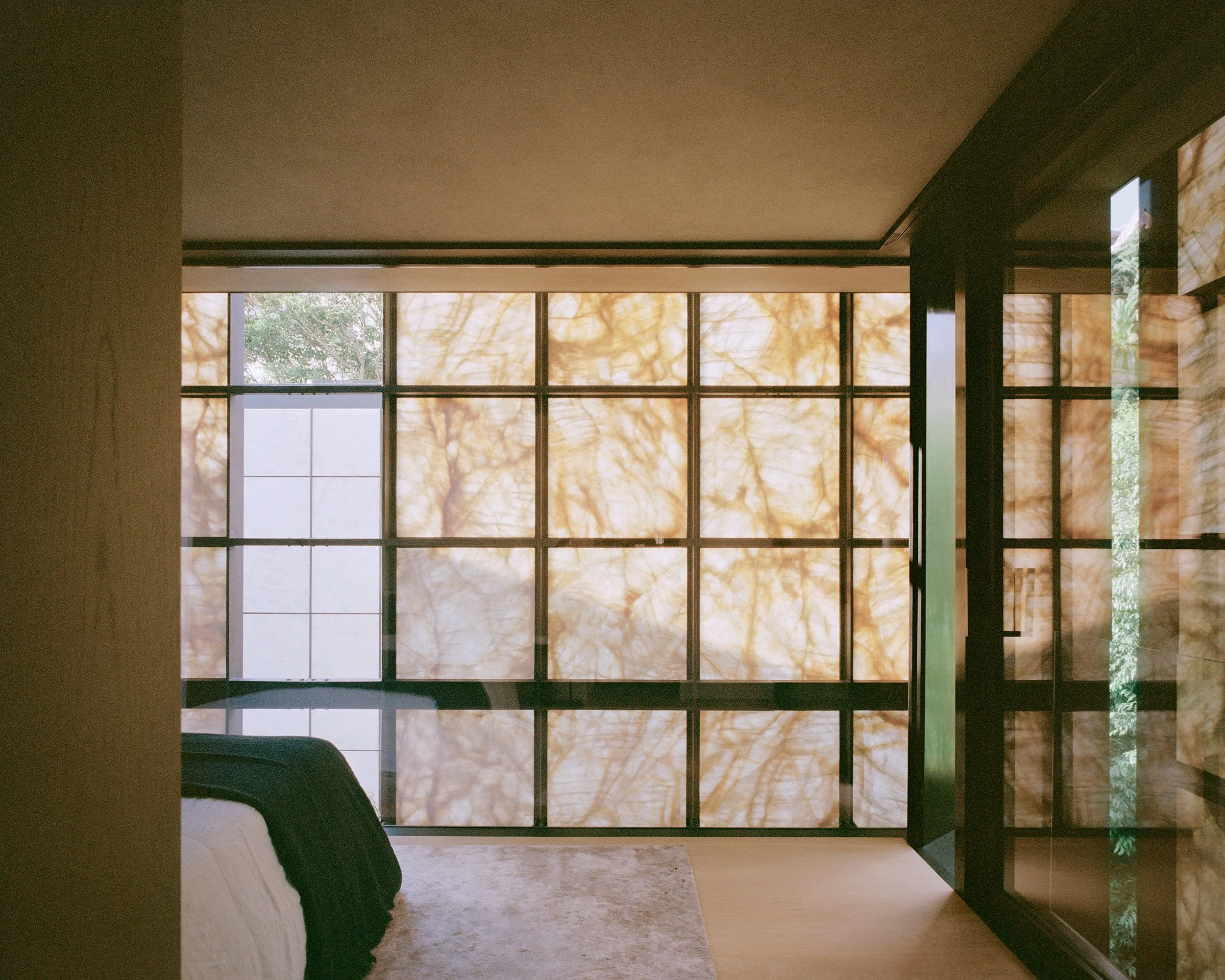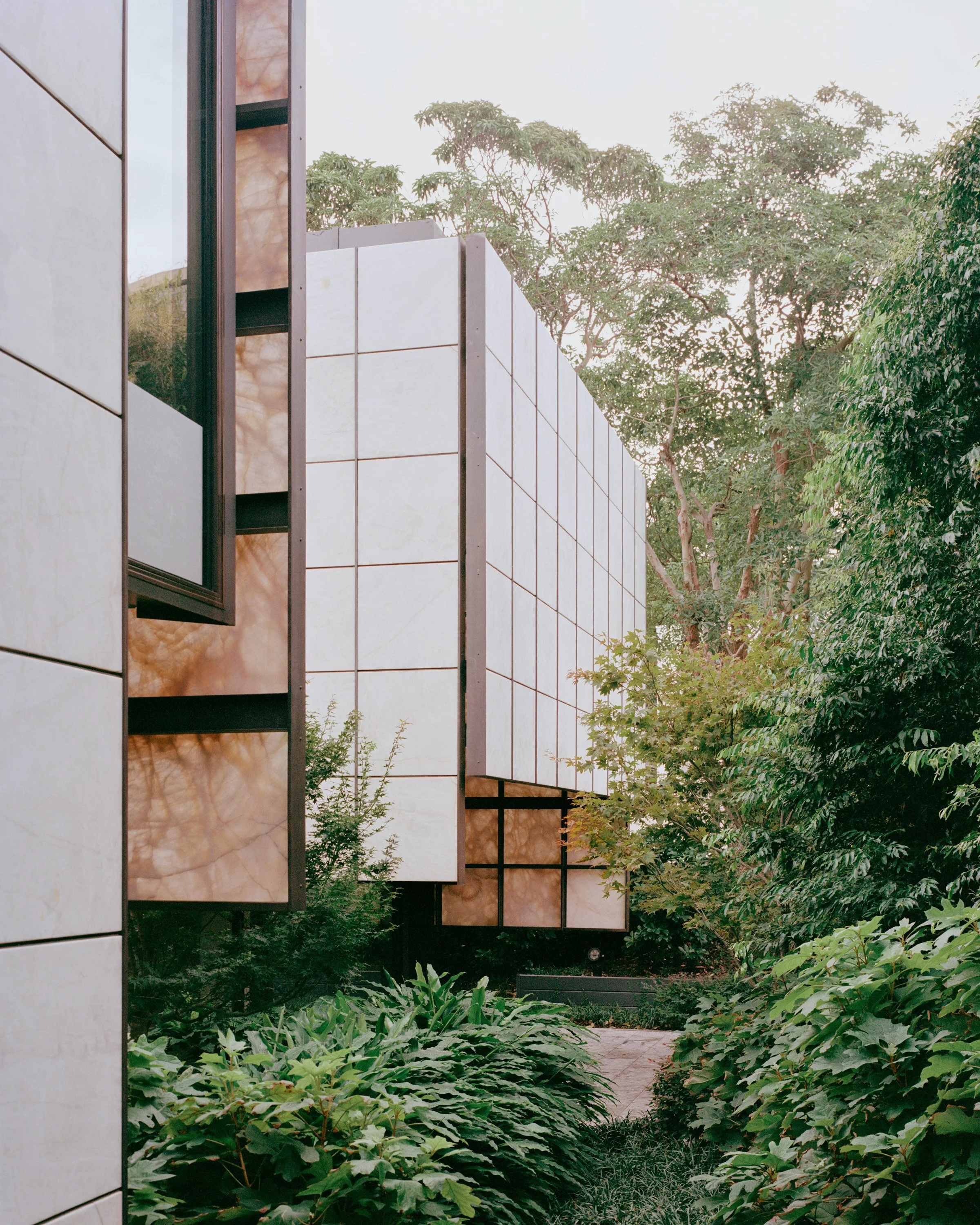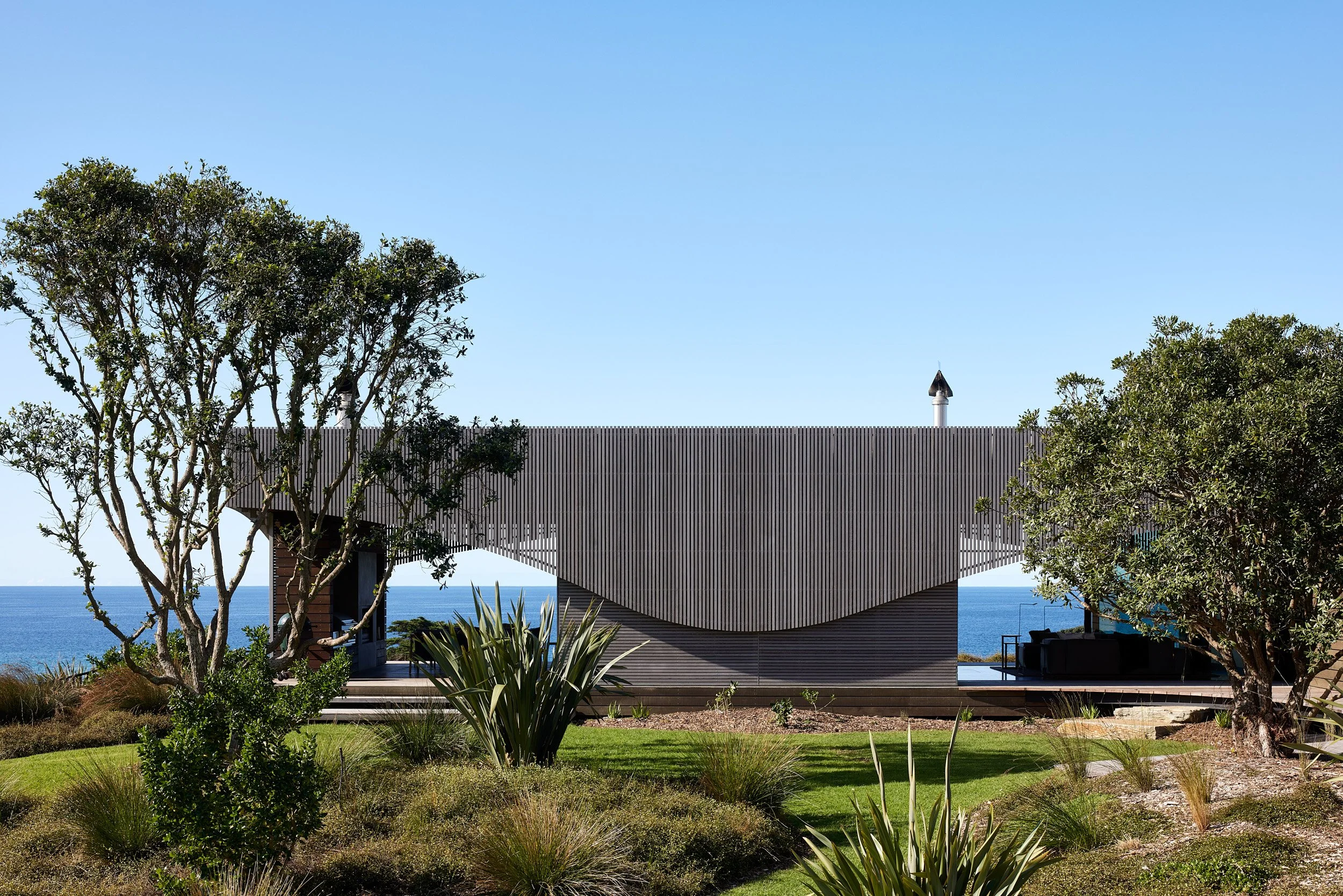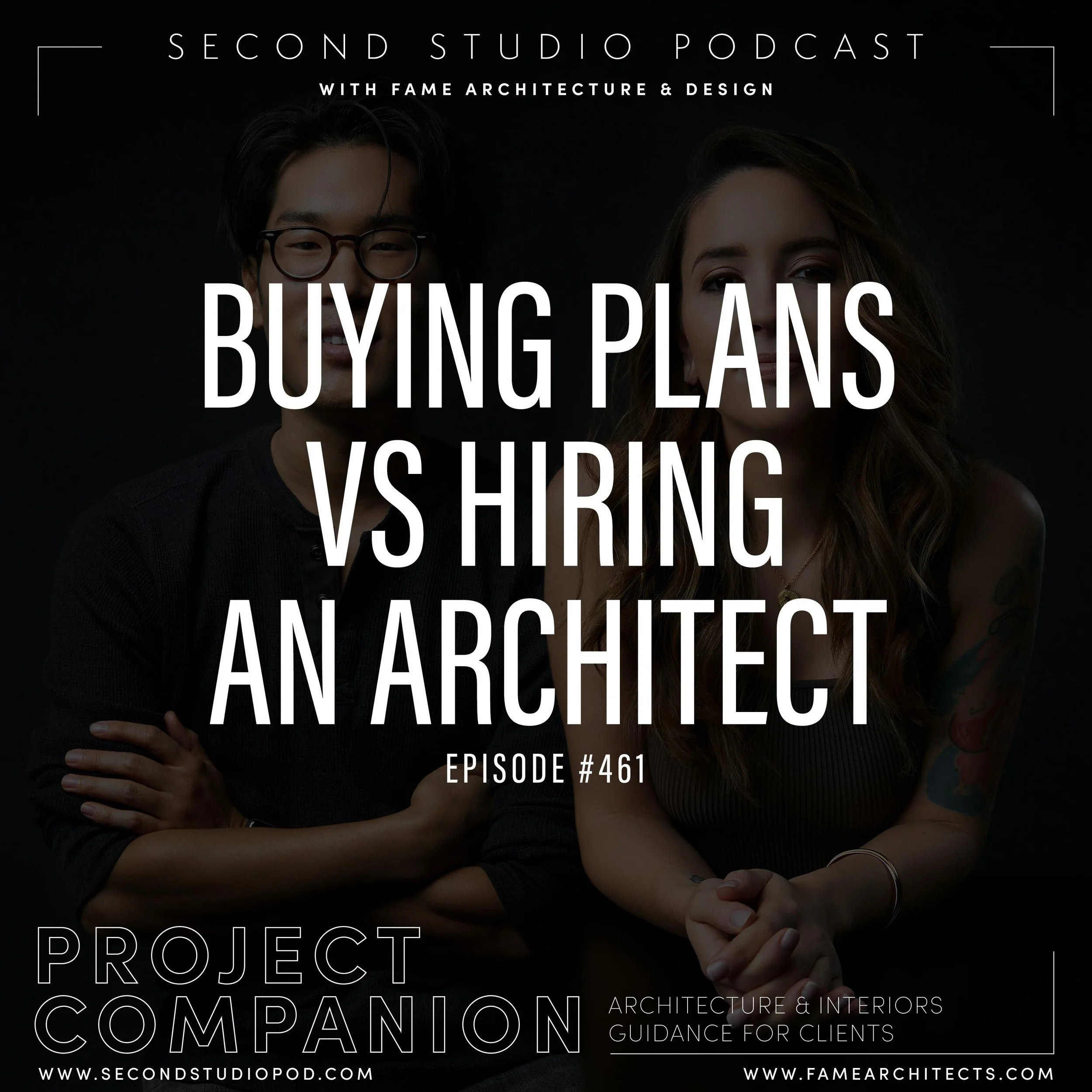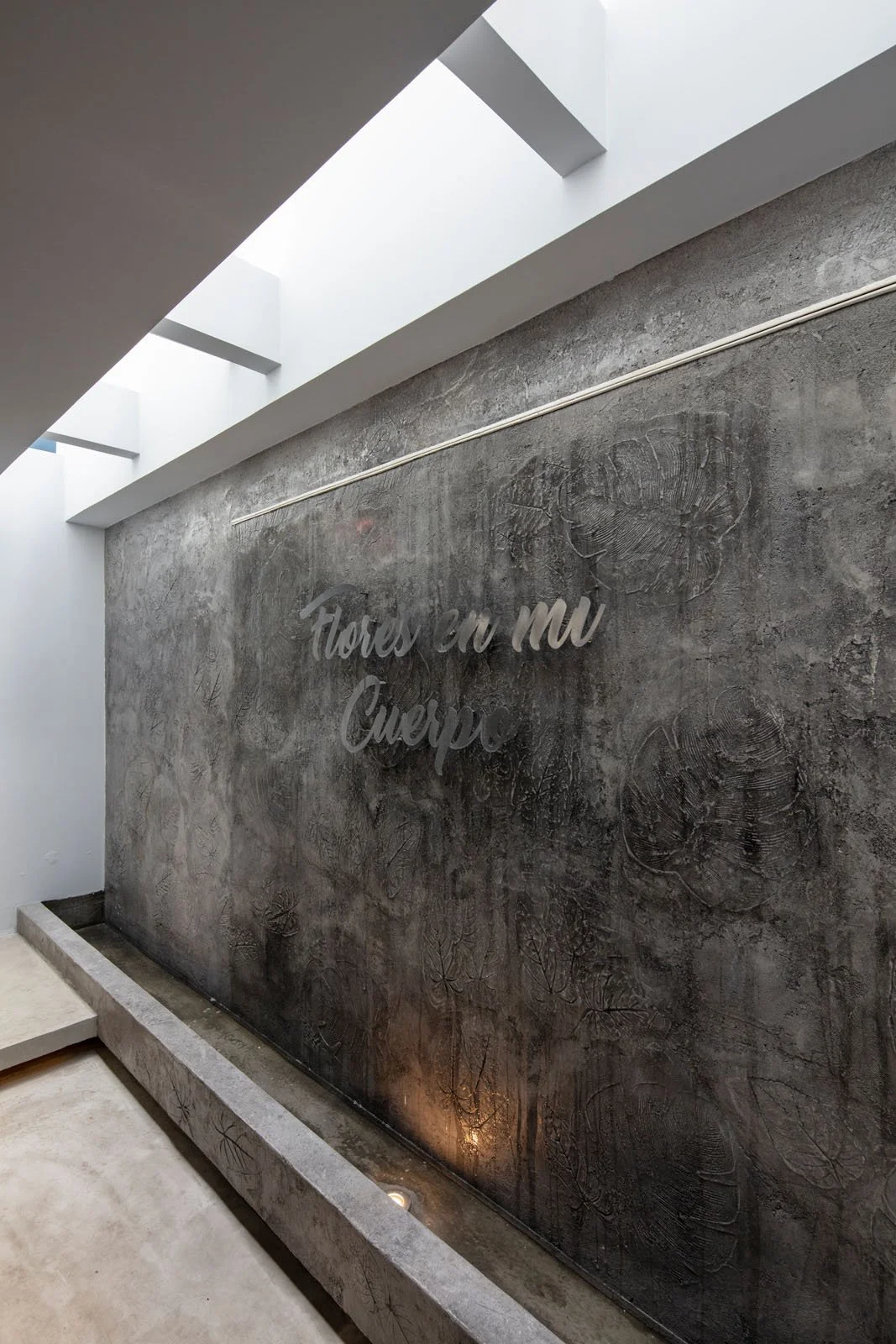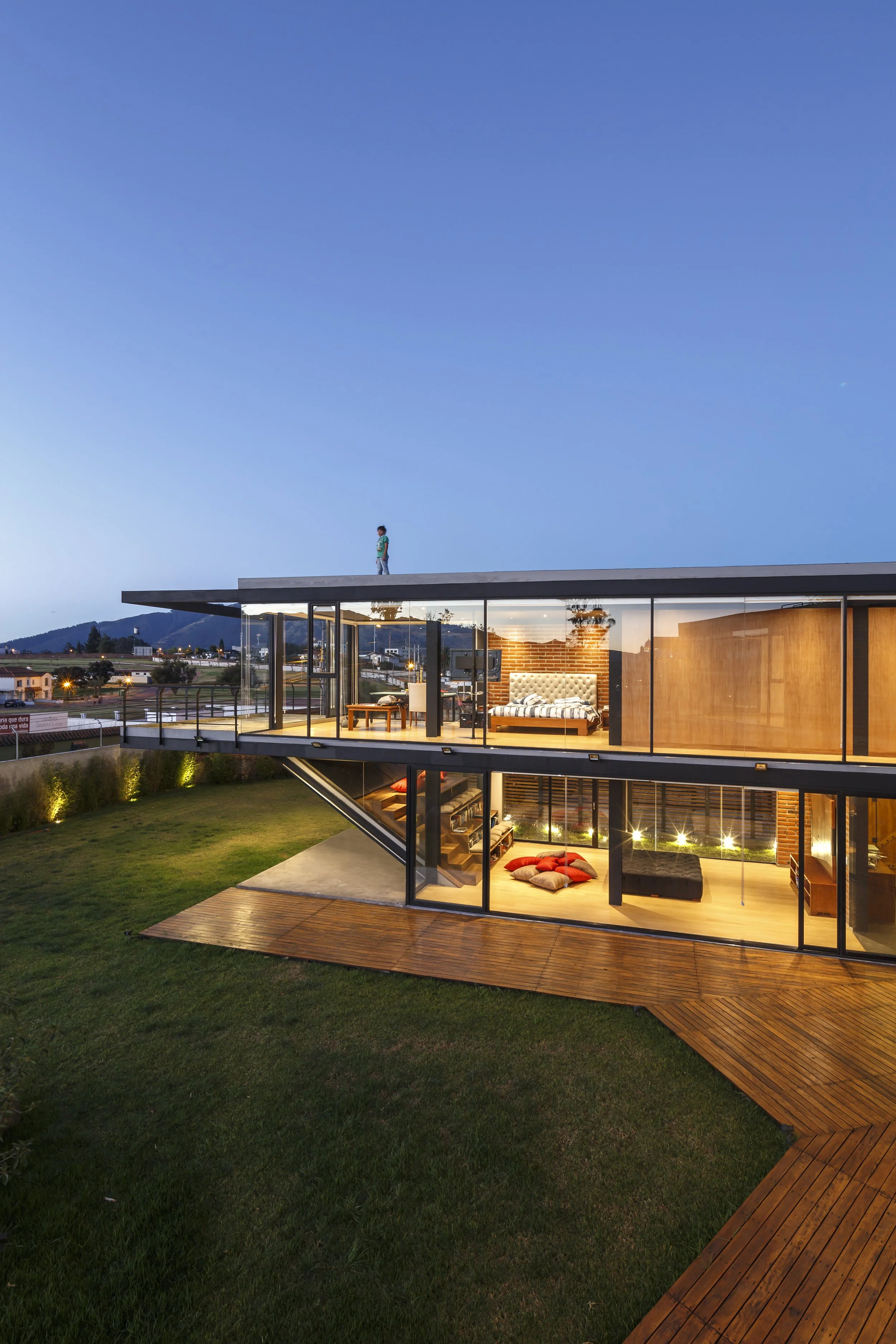#478 - GARRETT NEAL, Principal Lighting Designer at Neal Lighting
SUMMARY
This week, David and Marina of FAME Architecture & Design are joined by Garrett Neal, principal lighting designer at Neal Lighting. The three discussed Garrett’s early career influence, the evolution of Neal Lighting, working with family, defining lighting design, client presentations, and the process of lighting design. when to engage a designer, common misconceptions, technology advancement & impact on lighting design, scopes and challenges, psychology of lighting design, how to fix poor lighting, the future of lighting technology, and more. Enjoy!
ABOUT GARRETT
Garrett is the principal lighting designer at NEAL and a second-generation architectural lighting designer. Garrett grew up on his grandfather’s job sites and watched his father design at an early age. He feels fortunate to have been passed down an eye for aesthetics and taught the skills to execute the design of a beautiful space.
Garrett is currently working on a wide range of projects, including large-scale hotels, restaurants, multifamily and luxury residences. He has an aptitude for quickly building relationships with our clients and fellow design team members, and contractors.
Garrett’s passion for architecture, art, music, and culture helps to inspire each project he works on. His clear communication of the lighting design concepts early in the project gives the design team and clients the ability to proceed through each phase confidently.
Garrett is an active member in both the Illuminating Engineers Society of North America (IESNA) and the International Association of Lighting Designers (IALD) and is also (CLD) as a nationally recognized Certified Lighting Designer.
TIMESTAMPS
(00:00) Garrett's early influence.
(06:00) Evolution of Neal Lighting.
(08:04) Working with family.
(12:01) What is lighting design?
“We [Lighting Designers] design the space for how it should feel and look with the lighting. We work just like an architect or an interior designer does. We're on board from schematic design all the way through to construction administration, and we bring the vibes to the space. We make it feel comfortable and intentional by really understanding the architecture and highlighting the materials.” (12:33)
(19:39) Presenting lighting design to clients.
(23:48) Lighting design process & when to engage a designer.
“[There’s a misconception that] the fancy lighting designer is going to spend way too much money or they’re only going to design with the most expensive stuff. But it doesn't have to be expensive for it to be a successful design. It just has to have a purpose, and it has to be well thought out by the designer.” (31:33)
(32:09) Misconception about lighting design.
(36:40) Adjustments to lighting post delivery.
(41:41) Technology advancement affects lighting design.
(44:24) Lighting design scope & challenges.
(47:30) Use of software in lighting design.
“Lighting programs do not consider the importance of shadow and darkness. They're like, here's how much light you have on the ground, here's what your reflectance is, and here’s what it should be from a candela standpoint. It's a great tool, and it's necessary for certain spaces and project types where we do have to meet minimum criteria in different areas, especially for commercial projects. But in a nice hospitality or a residential space, it's about designing with a gut feeling and experience for the most part.” (50:07)
(53:15) Psychology of lighting.
“When you're out for dinner, and it's transitioning from day to night, if you pay attention, you’ll notice the lights dim at some point and everyone will kind of relax. Even if it's just decent lighting, they will sense the shift, and it has an immediate psychological impact. These 100 people in one space all feel the same thing at the same time, and it just completely changes the vibe. It’s like, “Oh, okay, now I can have the second glass of wine.” (54:17)
(55:26) Simple ways to fix poor lighting.
“It's easier to do it right the first time than to go back and try to do a little rehab on the space. It's often more costly too, and is always harder to get just right. So, it’s super important to get it right from the beginning. But I don't think it takes a lot more than somebody who knows what they're doing to make recommendations on how to improve the space with the budget provided. There's definitely always something that can be improved in that regard. A lot of times, it’s about removing things because there’s too much light. I feel like most spaces are overlit, so it's just about taking some lights out or switching them to another type of light.” (56:07)
(58:44) Project type that Garrett would like to do.
(01:02:42) Challenge of lighting interior vs exterior spaces.
(01:06:32) Future of lighting technology.
HAVE QUESTIONS OR SUGGESTIONS?
TEXT/CALL OUR HOTLINE
213-222-6950
#476 - TIM HAY, Co-Founder of Fearon Hay
SUMMARY
This week David and Marina of FAME Architecture & Design are joined by Tim Hay, co-founder of Fearon Hay. The three discussed the visibility of architecture ideas & process, realities of achieving architecture design, the business of architecture practice, architecture community helping young architects, Fearon Hay studio size and operations, local vs international projects, client relationships, working on different project types, architects in public policy and development, what Tim would do instead of architecture, his favorite building, and more. Enjoy!
ABOUT TIM
Fearon Hay is a design-led studio undertaking a broad range of projects in diverse environments, the firm is engaged in projects on sites around the world.
Tim hay and Jeff Fearon founded the practice in 1998 as a way to enable their combined involvement in the design and delivery of each project. Together, they lead an international team of experienced professionals.
The studio approaches every project with a commitment to design excellence, a thoughtful consideration of site and place, and an inventive sense of creativity. Fearon Hay enjoys responding to a range of briefs: Commercial projects for office and workplace, complex heritage environments, public work within the urban realm or wider landscape, private dwellings, and detailed bespoke work for hospitality and interior environments.
TIMESTAMPS
(00:00) Visibility of architecture ideas & process.
“These small physical models are such visual tools. I find when they're sitting in my peripheral vision, and it might not be what we're working on at that time, but the visibility of them means that those moments where your mind or your eyes wander, you capture a glimpse of them, you look at it, pick it up, rotate it, and you think about it. You participate in a process of design that I don't think happens in the digital modeling world. I remember seeing the images of Frank Lloyd Wright's studio with screeds of paper and people drawing, the visibility of the production and working was incredible because there was a sense of visible creation.” (08:03)
(16:49) Realities of achieving architectural design.
(21:08) Business of architecture practice.
(31:23) Architecture community helping young architects.
(36:20) Fearon Hay studio size & operations.
(40:08) Local vs international projects.
“We go beyond just trying to understand what the client wants. We want to know everything about the area. We bring a set of thinking and ideas that are unique because of where we are from [New Zealand]. As we export that thinking. There's this sensitivity to being an outsider and needing to learn, not just through online research, but forming relationships, meeting people and other architects, the openness and the giving that we are so lucky to receive. When we find ourselves in these different places, we dive into so many different parts of it to try and understand it. Building this foundation for the design and creative process is a really important part of feeling confident to design in those places, because we haven't been blasé or naive. We have invested in the place.” (44:42)
(48:46) Client relationships.
(56:15) Different project types.
(01:06:04) What would Tim do instead of architecture?
“There are the best parts of the cities and the parts that aren’t fantastic. You think about what would make that place better. What's missing? Sometimes it’s not significant things, maybe it’s bits of missing infrastructure. If part of what we do in the future is seeing these issues and actually being responsible for initiating development solutions or opportunities that enhance cities or communities, that fascinates me. We're not just waiting for someone else to come up with the idea and take that initiative. We can start looking at problems that exist and opportunities to make places greater.” (01:10:17)
(01:15:44) Architects in public policy & development.
“People talk about education and how you would bring up a child in the best possible way. If they apply that sort of thinking and sensitivities to cities, you'd say, “Oh my God, it's terrible. This child can't grow. It's awful. It's got no ability to imagine a future because of the constraints.” The world has a lot of pressure at the moment, so many problems to be solved. But if there was a sense of opportunity and optimism, so that the places that we all lived in had a sense of exciting vision for the future, 30, 40, 50 years from now, so that our children and their children have a sense of where it might go. Those visions don't really exist.” (01:16:36)
(01:27:31) Tim's favorite building.
HAVE QUESTIONS OR SUGGESTIONS?
TEXT/CALL OUR HOTLINE
213-222-6950
#474 - WILLIAM PEDERSEN, Founding Design Partner of Kohn Pedersen Fox Associates (KPF)
SUMMARY
This week David and Marina of FAME Architecture & Design are joined by William Pedersen, founding design partner of Kohn Pedersen Fox Associates (KPF). The three discussed William’s background and career influences, leaving hockey for architecture, career breakthrough, establishing and growing KPF, gesture & response site design approach, One Jackson Square, maintain design quality in growing office, buildings that Bill is proud of, designing his own house and furniture, most challenging project, if Bill would do anything different in his career, and more. Enjoy!
ABOUT BILL
Glass, Steel, and Stone Bend Toward Humanity In Gesture and Response
Architect William Pedersen, FAIA, Investigates 25 Key Works of KPF Architects
“Tall buildings have anthropomorphic characteristics that encourage me to think of them as human participants in the city,” writes William Pedersen, FAIA, in the introduction to Gesture and Response. Within this new book of 25 of Pedersen’s designs, the reader will immediately see how buildings and cities continually reach out and react to each other.
Pedersen—co-founder with A. Eugene Kohn, FAIA, and Sheldon Fox, FAIA, of Kohn Pedersen Fox Associates (KPF)—selected these designs as emblematic of his architectural aspirations, contextual concerns, and material manifestations. He shows how monumental buildings made from hard glass, stone, and steel can exist at a gentle human scale.
From 333 Wacker Drive (1982) in Chicago to Hudson Yards (2019) in New York, the buildings span 45 years of the architect’s career, as KPF’s influence and global footprint grew. After taking the reader on a chronological tour of 24 towering corporate headquarters, contextual educational facilities, and community-oriented government projects, Pedersen takes us home—literally—to examine his own house on Shelter Island that was 20 years in the making.
Introducing full-bleed project photographs are buff-colored pages with plans and drawings, along with the story Pedersen weaves about each project. The architect’s text is incisive and illuminating, as elegant as his buildings, devoid of architectural jargon and theoretical rationalization. Through the easy prose, he proves that KPF’s work “was not the product of a polemical manifesto.”
As a final grace note, Pedersen ends the book with a section on the furniture he’s been creating for the past seven years. “The surprise is that my second career as a furniture designer explains my first,” he notes. “I discovered that my chairs, done primarily by myself, and my architecture, created in collaboration with many others, have a lot in common.”
“Gesture” can sometimes have a negative connotation in architecture when it is done for its own sake. Pedersen never does that—expressive details are tied to programmatic requirements and contextual imperatives. The buildings themselves gesture to their surroundings as “a fundamental strategy for bringing about connections in the modern city.”
Similarly to how Louis Sullivan, FAIA, expressed the visceral beginnings of his architecture in 1924’s The Autobiography of an Idea, Pedersen relays the thought and emotion in his reactions to client, site, program, environment, and myriad other needs and restraints involved in any built structure. Layered upon this are visual metaphors and dynamic interactions that fuel his creative expression. More than a monograph, as Pedersen himself states, Gesture and Response is indeed his “design autobiography.”
About William Pedersen, FAIA, FAAR
William Pedersen, FAIA, FAAR, is the founding design partner of Kohn Pedersen Fox Associates (KPF), which he started with A. Eugene Kohn, FAIA, RIBA, and Sheldon Fox, FAIA, in 1976. Fourteen years later, KPF became the youngest firm to receive the National AIA Firm Award for design excellence. Personal honors include Rome Prize in Architecture, Arnold W. Brunner Memorial Prize from the American Academy and National Institute of Arts and Letters, University of Minnesota’s Alumni Achievement Award, Lynn S. Beedle Lifetime Achievement Award from Council on Tall Buildings and Urban Habitat (CTBUH), and Medal of Honor from AIA New York. He was on the Board of the University of Minnesota Foundation and has been a visiting professor at Rhode Island School of Design, Columbia University, and Harvard University. He has held the Eero Saarinen Chair at Yale University and was honored as the Herbert S. Greenward Distinguished Professor in Architecture at University of Illinois at Chicago. He has a Bachelor of Architecture from University of Minnesota College of Design, St. Paul, and a Masters of Architecture from Massachusetts Institute of Technology, Cambridge.
www.kpf.com
TIMESTAMPS
(00:00) Bill's background & influences.
(13:47) Leaving hockey for architecture.
(16:05) Early career & architecture influences.
(24:58) New York City college.
“The comparative process enables me to deal with the three major forces of a problem: the site, the program, and the client. It’s extraordinarily important to get the client's acceptance. So, I decided to go through a series of possibilities, but it was not designed to be a Chinese menu for the client to choose one or the other. It was a desire to draw the client's aspirations because they can’t articulate their aspirations until they see something. By comparing a series of all the possibilities, we were able to get an understanding of what they're trying to achieve, and they were able to understand what I was trying to achieve. It never, ever ended up becoming a disappointment where they forced on me something I didn't want.” (29:15)
(31:02) Establishment of KPF Architecture.
(36:32) Growing KPF.
“This comparative process, a process of having a senior designer, with whom I work very closely, enabled them to develop the skills to ultimately lead projects themselves. That's how our office grew. We never brought anybody in from the outside for our design. Everybody was growing within the office. One of the things that Eugene Kahn was so good at was that Eugene encouraged younger people to be entrepreneurial. He didn't say, “No, I want to lead all these projects.” He let several [young architects] go out and develop relationships themselves. That was so fundamental to the ability for the office to go from one generation to another.” (37:46)
“Architecture school tries to train everybody to be a genius. It's an impossibility. We have good architects in our office, and I think I'm a good architect, but I'm not a genius. I found a way through working with other people and finding a way to get the best out of every possibility. That's the way KPF has been built. One of the reasons for the longevity of the people in our top positions is that they were able to find a way to get something out of their careers for themselves. And that, to me, is important. A young architect coming into an office ought to be able to see the possibility of someday achieving their aspiration.” (42:06)
(43:41) Gesture & response designing to the site.
“The gesture is not intended to be my work. The gesture is what the site gestures, and the response is the architectural response to the site's gesture. That's the important inversion. It's almost impossible to produce a consistent style with that attitude because the style evolves from the nature of the place. The opportunity to make connections of the same building type is [somewhat disregarded or lost in modern architecture]. I tried to do it with conventional commercial buildings, but unless everybody buys into this concept of connection, it's sort of a fruitless thing. Because you stand there hoping for connections, but there's nothing to connect to. So, I left that for a more generalized gestural response to the nature of the context.” (44:03)
(49:08) One Jackson Square.
(52:40) Maintaining design quality when growing the office.
“Architecture, particularly since Covid, has changed tremendously. When KPF was growing, all the global opportunities presented themselves, and we had a method for growing that seemed to work. But it's much more difficult now when those opportunities don't exist that frequently and when you have to go in the other direction. Clients are demanding turnaround times that are insane. The amount of pressure that's been put on architects has increased because technological tools now enable us to work faster. It's an entirely different world.” (53:49)
(58:57) Buildings that Bill is proud of.
(01:02:43) Design process for own house & furniture.
(01:05:49) Most challenging project for Bill.
(01:11:54) Bill's favorite place to eat.
(01:13:28) Would Bill do anything differently in his career?
HAVE QUESTIONS OR SUGGESTIONS?
TEXT/CALL OUR HOTLINE
213-222-6950
#473 - STARTING YOUR ARCHITECTURE CAREER
SUMMARY
This week David and Marina of FAME Architecture & Design share their advice for young architects who are beginning their career. They discussed when to start your own practice, how to avoid setting yourself back, personal vs professional development, career lifespan of an architect, being young and risk appetite, producing vs learning, cheap design disclaimers, how long to stay in an office, should you have your own office, and more. Enjoy!
TIMESTAMPS
(00:00) Advice to young architects starting career.
(12:37) When to start own practice.
“Some people, they think they need to have more experience at other offices before they can do their own thing. Other people, though, are quite capable of learning and advancing their design skills on their own without being mentored by someone in an office. Because when we talk about gaining five years of experience at an office, mostly we are thinking about the trade experience, not the business experience. There are some people who will learn all that stuff just as well, if not more completely on their own, because they have that way of working, questioning things, and information proactively. Versus others who need the structure of an office and a mentor to learn those things. So, it depends on the person.” (17:27)
(21:50) How to avoid setting yourself back.
“When you just have academic experience without professional experience, you don't really know what you want to do professionally. Because you might enjoy the conceptual design of X, Y, and Z structures, but to design them as an actual practicing architect is a very different thing. Offices also do things differently. You could end up discovering something incredible that's meant for you by working randomly in an office that you were not even considering before. It's interesting because a lot of students often are like, “Oh, I want to work for one of the big names.” And when they make it there, they want to get out. I think how you might set yourself back a little bit is by being too specific, too early, without giving yourself a chance to try different things.” (24:25)
(26:01) Personal vs professional development.
(40:25) Start own practice sooner.
“There's always a lot of critical steps, decisions and moments in an architecture project where there is an unknown thing that someone has to solve. Yes, it has to do with that person's experience. But I think first and foremost, it has to do with their ability to be a master problem solver, regardless of their experience. So, for me, it's like, if that's the standard of practicing anyway, why not just do that from the get-go and have 99% of it be new from day zero when I'm young and I have nothing to lose.” (47:25)
(48:13) Career lifespan of architect.
“Time is like a currency. You only have so much money to spend, and you need to think about it, which is the antithesis of being free and doing whatever you want. You don't need to strictly adhere to these parameters and there's no hard ruleset, but I think you should at least think about it. Because once those ages of 20 to 25 goes, those five years are gone. You don't get to do them again. For most people, the stakes ramp up over time. You don't get to go back and just fuck around for a couple of years doing this and that. Once you get to an older age, it's not possible and it's not responsible to do.” (50:23)
(51:16) Being young & risk appetite.
“The people who have the most interesting design work are the folks who have a mixture of backgrounds. They've gained experience in different ways because they don’t just plop down in one region, one city from the age of 23 and stayed there their entire lives. They went out and tried stuff in different places and there’s a lot of things that could be learned from this experience. It also makes you more resilient. If you've left everything you had for a place you know nothing about and managed to survive for a year or two, you would be able to figure anything out. That is a huge survival skill that will benefit you in your career and life.” (01:01:24)
(01:01:12) Producing vs learning.
(01:04:42) Cheap design disclaimers.
(01:09:27) How long to stay in an office.
“You should trust your gut. If you're at a place and within those first three years of experience you feel unhappy there, it’s probably for good reasons. It's either because the office is to blame, or it's the wrong fit. In either case, you're unhappy, so you should change. It's tough when it's your first job because when you're at that threshold where you don't have a lot of experience, you don't want to prematurely pull the plug. But you also don't want to overstay your time because it's just a waste. If you're really unhappy, then I would give it maybe one more month at most. And if you’ve tried to make improvements in that office by being proactive and [voicing out the issues], but they're just like, “Oh, well, that's too bad.” Then leave. Don't waste your time anymore.” (01:09:56)
(01:17:14) Should you have your own practice?
HAVE QUESTIONS OR SUGGESTIONS?
TEXT/CALL OUR HOTLINE
213-222-6950
#472 - FRANK RENFRO & KAMBIZ KAMDAR, Co-founders of Pali Builds
SUMMARY
This week David and Marina of FAME Architecture & Design are joined by Frank Renfro and Kambiz Kamdar, co-founders of Pali Builds. They discussed how Pali Builds started, alternative construction methods and products, issues affecting the fire rebuild, community leadership, why Pali Builds was established, the need for centralized information, cost to rebuild, helping fire victims on larger scale, biggest challenge facing AEC industry, current fire rebuild permit data, future development of the Palisades, what’s next for Pali Builds and more. Enjoy!
ABOUT PALI BUILDS
Pali Builds was founded by Pacific Palisades residents in the aftermath of the devastating 2025 fires with one goal: to help our community rebuild smarter, faster, and together.
After months of participating in local recovery efforts, co-founders Kambiz Kamdar, a fourth-generation builder, and Frank Renfro, a seasoned software developer, realized the community needed better tools and clearer information to navigate the complex rebuilding process. Combining deep roots in construction and technology, they created Pali Builds to empower residents with the data, guidance, and connections needed to make informed decisions and rebuild with confidence.
Pali Builds leverages a variety of public and private data sources to provide accurate, up-to-date information on building permits, property sales, and construction trends across the Palisades. The platform is privately owned and independently operated by locals who care deeply about the future of our town.
Kambiz Kamdar
Kambiz is a fourth-generation builder deeply rooted in the Pacific Palisades community. A licensed general contractor, Kambiz brings decades of expertise in constructing single-family homes, multi-family residences, and commercial properties across Los Angeles. Beyond his professional work, he is actively involved in the neighborhood as a member of the Palisades Parks and Recreation Advisory Board and various grassroots groups where he helps guide local recovery and development efforts. A dedicated youth baseball coach as well as board member for Pacific Palisades Baseball Association and proud Palisades resident, Kambiz’s children attend Palisades Charter High School and Calvary Christian School. His true passion lies in helping others build their dreams both literally, through thoughtful construction, and metaphorically, by empowering families and businesses to grow in the place he calls home.
Frank Renfro
Frank is a seasoned software developer and entrepreneur with a passion for creating solutions that strengthen communities. He has built hyper-local, consumer-focused apps like Naybur and SoNeighborly, designed to connect neighbors and simplify local engagement. A longtime resident of Pacific Palisades, Frank lived in the neighborhood with his family, coaches AYSO soccer, and serves on the Palisades Rebuild Council, where he helps guide recovery efforts after the wildfire. Driven by a love for problem-solving and helping people, Frank combines his technical expertise with a deep commitment to his community, working to make rebuilding smarter, faster, and more accessible for all.
TIMESTAMPS
(00:00) How Pali Builds started.
(05:10) Alternative construction methods & products.
“We were almost brainstorming based on the assumption that [the fire rebuilds] was like a master planned community where there was one landowner. So, when you're making decisions, you only need the one landowner to buy in, and then the project moves forward. But our situation [in the Palisades] is we've got 5000 landowners that are not connected. They all have different timing, driving forces, budgets etc. So, taking that into account, [we wondered] how could we solve this? A lot of the meetings were forgetting about that component. It was, “Hey, this is how you build at scale. Let's go get Lennar Homes, and we're going to build 5000 homes.” But wait a minute, we've got 5000 independent owners, and they might have an opinion on all of it.” (09:38)
(11:35) Issues affecting fire rebuild.
(14:32) Community leadership in fire rebuild.
(18:31) Why Pali Builds was established.
“We were just so hungry for information. What is going on? What is happening? So, Pali Builds was a source that had real meat on the bone. Here's the data: this is how many people are building, and these are the builders that are building those projects. That was initially what we were providing. We're answering all these emails, and fortunately, Kambiz is a builder, so he knows how to build, how to vet various types of contractors and what are the steps that you need to take before you even talk to a general contractor.” (24:08)
(29:15) Need for centralized information on fire rebuild.
(32:10) Cost to rebuild.
“I think if someone's telling you [they can build for] under $600 a square foot, I would question that. On the other hand, if they're telling you over $1000 a square foot, I would question that too. I think the numbers should fall in that range between $600 and $1000, which is a lot. But I break it down and say, “A shell, will cost you X, and the rest is going to be finishes. So, take that number, figure out what kind of finishes you want, and then that's where your [construction costs] are going to end up.” The numbers that I'm throwing out are assuming just a typical flat property in the Alphabet streets or other areas. You have a ton of different topography throughout the Palisades. There are soil and landslide issues or coastal regulations in some areas. So that number can jump depending on how complex your foundations are going to be.” (35:17)
(39:10) Helping fire victims on larger scale.
“People ask us to give referrals which we can do, but we’re really trying to educate more. As a contractor, we send out newsletters that [guides homeowners on how to find contractors, factors to consider, and other advice or information.] I will say an architect is someone that you're going to work with for the next two years very intimately. I equate it to being married to them for the next two years, because you are going to have ups and downs and arguments. You guys are building a baby together. So, when hiring architects, you got to have a good rapport with them. It's going to be someone that you're happy to talk to and exchange criticisms with. We're trying to not necessarily tell this person to go with this architect or that contractor. It's telling them the things to look for before you choose the right person.” (42:23)
(47:29) Biggest challenge facing AEC industry.
(50:42) Various design solutions.
“The beauty of the Palisades pre-fire was that you can have a 4500 square foot McMansion in the Alphabet Streets, next to a 1500 square foot house that had been handed down for four generations. The variety was the flavor of the Palisades. I tell everybody it's not the homes that made the Palisades; it was the people. That was the beauty of the Palisades. So, if they want to go prefab or if they want to build a 4500 square foot house, go for it, give it some variety, give it some flavor. That's what Palisades was before, and that's what it will be going forward because everybody is in a different situation.” (51:27)
(52:12) Current fire rebuild permit data.
(57:19) Future development of the Palisades.
“When people stick their nose up at developers, or say that it’s super homogenous, I think they are assuming that the option [for the fire rebuild] is all unique homes and all the lots are built versus having some developer homes and or spec homes and unique homes. But the reality of the situation is, if you don't have the developers, you're probably going to have empty lots or land bank. So, it's kind of a false comparison, unfortunately.” (01:03:58)
(01:05:34) What's next for Pali Builds.
HAVE QUESTIONS OR SUGGESTIONS?
TEXT/CALL OUR HOTLINE
213-222-6950
#471 - DAVID MICHAEL, Chief Creative Officer and Founding Partner of Tecture Design Studio
SUMMARY
This week, David and Marina of FAME Architecture & Design are joined by David Michael, Chief Creative Officer and Founding Partner of Tecture Design Studio. The three discussed David’s background, his early career, travelling & school, establishing Tecture, vision for Tecture, firm size & operations, fabrication mockups & testing, budget & schedule, design build business structure, appeal of design build, façade materials & buildings. Enjoy!
ABOUT DAVID
Gemini.
Cattle Dog Wrangler.
Plant Daddy.
85% Vegetarian / 10% Pescatarian / 5% Tequilarian.
For David Michael, creativity isn’t just a passion—it’s a fundamental need. As Chief Creative Officer and co-founder of Tecture, he leads with an experimental, hands-on approach rooted in craftsmanship, collaboration, and curiosity. Whether sketching a concept, exploring new processes, or getting dirty in the shop, he believes the best ideas come from doing.
Since launching Tecture in 2012 alongside partners Kyle Preish and Slade Fischer, David has helped grow the studio into a 30-person team working across the intersecting worlds of design, art production, custom furniture, lighting, interiors, architecture, and space-making. Before earning his Master’s in Architecture, he cut his teeth in boat carpentry—an experience that shaped his deep appreciation for clean details, functionality, and utility.
Known for blending precision with play, his design philosophy is simple: work hard, play harder, and obsess over the details—they’re what make something unforgettable. He lives in San Diego with his best girl, a house full of plants (over 50 and counting), and a couple of wild dogs.
TIMESTAMPS
(00:00) David's background.
“We like to create prototypes. It's that whole thinking through making [that allows you to] see new opportunities. When you are only behind a screen, I think you lose a lot of the ability to find those unexpected opportunities that will come up, just by cutting and folding paper; even the act of origami changes how you view things. You can do that on a computer, but it's just it takes time and you have to have a set end goal. Whereas in thinking through making, there is no end goal because you're not sure what you're going to come up with. But in Rhino or any other software, you kind of know what you want to end up with. There are no unexpected moves.” (02:57)
(07:32) Early career.
(14:43) Travelling & school.
“In school, being critical of work was something that our teachers would just literally rip your pieces apart if you could not back them up. What's your reason for doing something? Because I see some projects that were like, okay, that looks good. But if they couldn't tell the teacher why they did it, then it was just arbitrary. They would just get pulled apart based on that, not even the fact that it was like necessarily a bad move. There’s the teacher who would take the piece and twist it, turn it upside down. I think that's a classic and it would suck. But sometimes you're like, “Yeah, actually it is better that you just did that.”” (19:14)
(30:50) Establishing Tecture.
(35:59) Vision for Tecture.
“Teachers are so critical in school. Not critical in a bad way, there's nothing personal about it. Don't take it personally as much as you might want to because you love this design and you worked hard on it. But if it doesn't work, if it's not the best option, then you got to rethink it. How can you make it better? How can you make it fit within the parameters of the reality? Reality could be budget, timeline, or location. So, this is something we still bring into the studio. We reinforce with our team that we want the creative ideas. We want you to show us you, but you also have to work within all these parameters, which sometimes can kill ideas and kill these things that you really want to do. But that’s the parameters you have to work in.” (38:28)
(39:33) Firm size & operations.
(51:26) Fabrication mockups & testing.
(54:30) Budget & schedule.
“With a lot of the pieces in architecture, we have to work with the parameters. The client might have this fixed budget, and they're like, “What can we do with that?” We’ll work through it and give them a number. You may not be able to use the material that you want, but we'll figure out a way to get your cost down. That's really where the design assist comes in handy. We're proud of the fact that we can help these other pieces come to life just because we know the tools, the process, and the material costs. We're able to really work with different architects and designers what their idea is and find a way to make it happen.” (01:00:59)
(01:01:55) Design build business structure.
(01:05:28) Appeal of design-build.
“The outside creativity helps feed the inside creativity. I can't expect people to just create creative ideas by sitting at their computer all day long and looking through what's been made. Go outside, take a walk, go out and do things, whatever drives your creativity. That's a hard thing sometimes to talk with my business partners about in terms of time. They’re like, “We are paying for creativity? You should be able to generate that. They should be here.” Unfortunately, that's not how creativity works. If you want unique ideas, they come from life and going outside. But it also needs to be a part of our culture in the shop.” (01:11:58)
(01:13:39) Favorite materials & buildings.
HAVE QUESTIONS OR SUGGESTIONS?
TEXT/CALL OUR HOTLINE
213-222-6950
#470 - PACIFIC PALISADES FIRE REBUILD UPDATES
SUMMARY
This week, David and Marina of FAME Architecture & Design share updates on the Pacific Palisades fire rebuild efforts. They discuss the lack of centralized information on the Palisades fire, common questions from fire victims, educating clients to make the right decision, like for like regulation updates, rebuilding without previous house plans, house footprint location & areas calculation, tax implications, finding a contractor for fire rebuilds, construction price discrepancies, and prefab housing. Enjoy!
TIMESTAMPS
(00:00) Lack of centralized information on the Palisades fire.
(05:36) Common questions from fire victims.
(14:00) Educating clients to make the right decision.
“Construction cost per square foot is a piece of information that is oftentimes easily misleading. As a resident, it's very easy to have a quick conversation with my neighbor, who tells me, “Our construction cost was $550ft².” So now I think, “Well, someone said 550ft².” What's missing from that number is the schedule, design quality, and the type of contractor–are they a spec builder contractor that takes all kinds of shortcuts on the inside of walls?, material quality, and execution level” (14:48)
(18:55) Like-for-like regulation updates.
“In the like-for-like type of project, previously, it meant you could build 110% of the previous square footage. Now, the rules for like-for-like projects have nothing to do directly with the total square footage limitation of the house. The like-for-like parameters only specify a maximum allowable size of the footprint of the building and the height. Within that bubble, you can do whatever you want.” (20:35)
(25:09) Rebuilding without a previous house plan.
(29:51) House footprint location & area calculation.
“In the like-for-like project, the shape [of the house] can be anything you want, which is very freeing. You can also move the location of the house pretty drastically–by up to 20% of the property width and the depth. So, if we have a rectangular lot that's 50 by 100ft. That means wherever your house was previously located, it can move front to back by 20ft and side-to-side by 10ft.” (30:11)
(33:48) Tax implications.
“The permitting approvals timeline difference between like-for-like and new construction in a non-coastal area is basically identical. So then why would you not just do a new construction? My understanding is that when you exceed the previous square footage, you get taxed differently. If you're doing a like-for-like rebuild, the first 100% of the square footage you build back gets taxed the same as before; it doesn't change. The additional 10% you're doing gets taxed at a higher rate, but not the rate of a new construction project. When you go beyond that and you are doing a new construction, the property gets reassessed, and now you're taxed much higher.” (34:21)
(35:39) Finding a contractor for fire rebuild.
“Broadly speaking, if you are under pressure where you have a tight budget, a tight schedule, and those are immovable, there's a good argument that that is not the type of situation for experimentation. Obviously, everyone's concerned with fire resiliency, and there are more fire-resistant methods of fabricating a house that are not common. Of course, if you go and you talk to those businesses, they will tell you all the great things about what they do and how it's more fire resilient. But there's like a hundred other pieces of information that dictate whether it's a good idea, and those methods oftentimes cost more money, even if they are faster in one regard, but often cause slowness in many other ways.” (45:17)
(48:12) Tips to rebuild on a tight budget.
“You're hearing from contractors who say, “I can do a high-end house for $400/ft².” Whereas other contractors who are reputable will say, “No way. It's $1000/ft² minimum for me to do anything of quality.” Why the heck would there be this massive range of costs? I think an interesting way to problem-solve that challenge is to have a few contractors give a ballpark estimate, which we would call a ROM or Rough Order of Magnitude, to rebuild your house exactly as it was before with common sense upgrades.” (49:00)
(51:21) Reason behind the big construction price discrepancy.
“As a developer, the more money I spend on construction, the less money I make. So, if I can build something that sells the same, but I can cut out $200/ft² or $300/ft², I will do that (if I were a sleazy developer). The things they cut out are sometimes things that you don't see on the outside, in the photograph, or in person. But what's behind the drywall? What's behind the wood siding? What did they use to secure the flooring? How's the framing? Oftentimes, it's the things you don't see necessarily, but should care the most about because that's what's going to make the house last, or not, over time. It is unfortunately very common for people to buy a spec house and enter a lawsuit afterward with the previous owner or the developer.” (52:30)
(01:01:17) Prefab house solutions.
HAVE QUESTIONS OR SUGGESTIONS?
TEXT/CALL OUR HOTLINE
213-222-6950
#468 - LANCE HERBST, Founder and Partner of Herbst Architects Ltd
SUMMARY
This week, David and Marina of FAME Architecture & Design are joined by Lance Herbst, Founder and Partner of Herbst Architects Ltd. The three discussed Lance’s educational background, his early career, moving to New Zealand, establishing Herbst Architects, Niki as a partner in all things, focusing on designing houses, timeline for building a custom home, modern architecture in NZ, practice’s language, operations & background, building codes & innovation, maintaining design variety, working with physical vs digital models, and more. Enjoy!
ABOUT LANCE
Lance & Nicola Herbst met whilst studying architecture at the University of Cape Town. After graduating they worked partly together and partly independently on projects in South Africa and immigrated to New Zealand in 1998 and established Herbst Architects in 2000.
One of the couples first projects was their own bach, on Great Barrier Island, for which they received the New Zealand Institute of Architects Award in 2002. The Island is now home to eight of their houses - all off the grid - each designed to have minimal impact on the environment.
For most of the past 15 years, Nicola and Lance have been been asking themselves this: what’s the best way to live in and feel connected to the New Zealand landscape and climate?
TIMESTAMPS
(00:00) Lance's education background.
(15:33) Working in architecture before starting studies.
“Even in just working in an office for one year, you learn that there's a reality and a practicality in how buildings happen. You realize the weight of the fact that everything you're doing is in service of getting a building built. Then you get to university with a whole lot of kids that have never been through that. University has everything to do with the process rather than the outcome. So, you find yourself slightly hampered by that real world experience because you think, “You can't do that. It's not going to work.” But the flipside of that is that you have learned how to put stuff down on paper and how a building actually gets built.” (17:03)
(20:30) Lance's early career.
(24:26) Moving to New Zealand.
(32:59) Deciding to establish own practice.
(37:33) Partner in all things.
(42:29) Focusing on designing houses.
(47:52) Timeline for building a custom home.
(54:00) Modern architecture in New Zealand.
(55:41) Office background.
“Where we are is probably where I wanted to be, otherwise I wouldn't be here. It's decisions and forks in the road that you take along the way. I think if you want to [grow into a large firm,] you've got to be good at managing and people orientated skills. It's not something that Niki or I am particularly good at. So, we either have to change our personality or bring someone in to do that. As immigrants in our 30s, it is probably more realistic for us to aim for a small to mid-size practice rather than a big one.” (56:41)
(59:04) When practice found its language.
“You design a sports car with the top down because that's how you're going to use it. It’s the same with buildings. The engagement with nature and weather comes to the top of the list as the thing you're designing for. In New Zealand, you get winds coming from either direction. You get a really cold wind coming from the southwest and warm wind coming from the northeast. Then there’s clouds rising overhead, so it’ll rain for three minutes and then it'll be sunny again. So, it’s a very changeable environment. A lot of the language around our buildings, like sliding screens and overhangs etc. are so that you can adjust the building to respond to this. We are sitting outside, and the wind has just flipped 180 degrees, so how do you stay comfortable?” (01:04:03)
(01:08:47) Building codes restricting innovation.
(01:12:19) Maintaining design variety for each project.
“A metaphor is a good conceptual mechanism, but it's not the only way to approach it. Concept for me is when you get an idea that comes out of the brief, the land, the client etc. And that idea then drives every single decision in the project to reinforce that idea.” (01:18:25)
(01:19:00) Working with physical models and 3D.
“One of the problems with working with physical models early on is that you can seduce yourself with them. A lot of the stuff we look for in architecture models are missteps, for example tracking junctions and how things connect with each other. Imagine the amount of handwork that it would have taken 20 years ago to be able to look at every single junction in three dimensions. We could do it so quickly now with digital modelling software, so I think it's been a game changer in terms of achieving an incredible resolution for a building.” (01:20:20)
(01:21:09) Lance's favorite building.
HAVE QUESTIONS OR SUGGESTIONS?
TEXT/CALL OUR HOTLINE
213-222-6950
#466 - ERWAN BOUROULLEC, Founder of Erwan Bouroullec Studio
SUMMARY
This week David and Marina of FAME Architecture & Design are joined by Erwan Bouroullec, founder of Erwan Bouroullec Studio. The three discussed Erwan’s childhood influences, the journey and challenges of becoming an artist, artist vs designer, his design process & philosophy, standard vs unique production, AI in design, architects as perfectionists, Erwan’s studio operations, his favorite projects, and more. Enjoy!
ABOUT ERWAN
Erwan Bouroullec, born in 1976, has practiced industrial and non-industrial product design for over 25 years. His work spans objects, furniture, and interiors for both large organizations and smaller companies. For much of his career, he collaborated with his brother Ronan at Ronan & Erwan Bouroullec studio, though they have since pursued independent paths. Based in Paris, where his studio is located, he also spends time in Burgundy, which serves as both a personal retreat and a workspace.
TIMESTAMPS
(00:00) Erwan's childhood influences.
(07:48) Journey of becoming an artist.
(17:23) Challenge of being an artist.
(20:43) Artist vs Designer.
“Culture is something which is much more complicated than a piece of art in a way. Everything that surrounds it is very important [because there’s a need] for it to be performative. If we as the interior architect, the designer, or the graphic designer mess up a job, there are many things that won't be working.” (24:28)
(26:50) Reading.
(30:02) Design process & philosophy.
“I think [we need to] think more about the method. I don't exactly know what's going to be the end result after the method, but I'm trying a lot of different things. All the production we’re facing are strictly similar. I’m doubting this is right, that at the end, everything becomes similar, similar, similar. Every product has to be similar by the millimeters. The color has to be exactly the same. Everything needs to look exactly like the picture you've seen. This thing is spread worldwide everywhere. I mean, it's totally crazy. My real goal would be to use some kind of randomness and coding and interweave it into production in a way.” (34:58)
(38:15) Standard vs unique production.
(45:11) AI in design.
“Maybe AI would help to creating some interesting complexity. I think it would be interesting to invent a little bit of this new language that would be taking the best of a very clean, radical architecture, but just give it some shapes that are a little bit less similar, rigid, and parallel.” (48:40)
(50:35) Architects perfectionist.
“Because if you want everything to be perfect, somehow you need to be able to describe what is perfect. It seems like we've got some difficulty to compute the complexity a little. Because I'm sure if you can draw some grids, then you could start pushing them a little or form it like it would be formed by the wind for example. [If you have all those tools, why not] play a little bit with data like you would play with clay in a way.” (51:29)
(53:15) Erwan's favorite project.
(01:06:14) Erwan's studio size & operations.
(01:16:38) Design philosophy.
“The mentality of the product designer is quite a cool one, because we try as much as possible to listen to everyone and to make the best solutions and the best compromise. It’s a balance. We can do things which are more popular because, yes, we still work in a world that you could compare slightly to fashion. Fashion has a kind of scale which is nothing like the world of proper radical contemporary design, but we still make some design which are made for the haute couture, which are not ready to wear collections.” (01:22:22)
(01:27:21) What project Erwan is working on.
HAVE QUESTIONS OR SUGGESTIONS?
TEXT/CALL OUR HOTLINE
213-222-6950
#465 - THE ARCHITECT AS EDITOR
SUMMARY
This week, David and Marina of FAME Architecture & Design discuss the editing process in architecture design. They touched on editing in the creative process, how to know what to edit, the difference between editing and value engineering, teamwork, subjective interests, subtraction and addition, refusing to edit, starting simple vs complex, a client’s role in the editing process, and more. Enjoy!
TIMESTAMPS
(00:00) Editing in the creative process.
(02:47) How to know what to edit out.
(11:02) Difference between editing and value engineering.
“Value engineering often happens further in the design process, and it is based on the budget. But editing in the design process doesn't always have to be related to that. Something can be edited out because it doesn't fit the concept well, or it doesn't make sense with the overall vibe for this project, or because another solution works better. Editing isn’t always about removing things; it could also be refining and tweaking things.” (11:28)
(19:51) Teamwork in architecture.
(23:32) Architect's subjective interests.
“You should be drawn to certain things for your sensibility as a designer to be your own. It’s whatever flavors and colors that make you, you. Having interests and preferences is often not well perceived because it feels like it’s forced onto the design, but at the same time, I feel like it has to be there.” (23:37)
(27:20) Value engineering vs editing.
(34:36) Subtraction vs Addition.
(39:50) A reluctance to edit.
“I don't agree morally with this idea that to produce good architecture, it requires someone to spend $2,000 USD a square foot. There's something fundamentally wrong and flawed about the profession and about that individual's perspective if they demand to have all these add-ons for the architecture to be successful. To me, you lack skill set, and you lack compassion for people who are on a budget.” (45:23)
(47:11) Starting simple or complex.
(56:30) Clients’ role in the editing process.
“Understanding a client's motives is only important to move forward. It does not validate their opinion. The thing that clients should understand is that because you don't like something, it does not mean you're right. Some aspects of houses or buildings are subjective, like they have personal preferences, and that’s fine. I don't think clients think about themselves as contributing to the editing process or being a motive for it. They just say, “I want this thing to be in there, so figure it out or stick it in there.” (58:13)
HAVE QUESTIONS OR SUGGESTIONS?
TEXT/CALL OUR HOTLINE
213-222-6950
#464 - SCOTT SPECHT, Founding Partner of Specht Novak
SUMMARY
This week David and Marina of FAME Architecture & Design are joined by Scott Specht, founding partner of Specht Novak Architects. The three discussed Scott’s background, the evolution of technology in architecture, conceptual vs real world architecture, history of Specht Novak Architects, optimal firm size, how different project experience translates, small office working on large scale projects, Case Study 2.0 & legalities of selling plans, finding good contractors, Scott’s favorite building, and more. Enjoy!
ABOUT SCOTT
Scott is the founding partner of Specht Novak with over 30 years of experience designing and managing institutional, commercial, and residential projects. Before founding Specht Novak (formerly known as Specht Architects), he worked as a senior designer for Studio Daniel Libeskind and collaborated with that office on its winning New York World Trade Center master planning proposal. He also worked for several years with Deborah Berke Architects, and Kohn Pedersen Fox and Associates Architects, and was the Designer on a number of tall building projects around the world. He is a licensed architect in Texas, New York, and many other states, and is a member of the American Institute of Architects.
Scott received his Master of Architecture degree from Yale University, where he received the George Nelson Scholarship and the Franklin W. Gregory Scholarship.
In addition to his work with Specht Novak, Scott was a featured speaker at TEDx, and was a co-author of the book “Coffee Lids” for Princeton Architectural Press. His independent design work has been exhibited in two SoHo gallery shows, at Yale University, the Van Alen Institute, the Municipal Art Society of New York, The University of Texas at Austin, and the Lower Manhattan Cultural Council.
TIMESTAMPS
(00:04) Scott's background
(10:22) Evolution of technology in architecture.
(15:59) Architecture grad school.
(19:39) Conceptual vs real-world architecture.
“You don't learn anything technical in school at all. In early practice, you have to be very lucky because you can screw up a lot of things that get you in major lawsuits, and I've seen it happen too. In school, you're building these models or drawing things that look perfectly reasonable. But nobody taught you to not do things a certain way because it's going to lead to lawsuits, collapses, and things like that. It is a little shocking that there's not more technical teaching in school in general. But it was always assumed that you're supposed to learn all that while you're working. Hopefully, you have the right experience to be able to do that without being sued or destroying your career along the way.” (21:03)
(24:32) Working at other offices before starting own practice.
(27:30) First projects.
(31:44) History of Specht Novak Architects.
(36:23) Optimal architecture firm size.
(40:08) How experience in different project types translates.
(42:29) Coordinating & building hand-drafted construction drawings.
“You think back, and the Saturn Five Rocket was designed with people on drafting tables. How the hell did they coordinate that by hand and paper? I think a lot of it was because the builders at the time had a lot more experience with how to coordinate construction themselves. A lot of times, the drawings of those complex designs were just a 2D elevation drawing, that's it. The craftsman was expected to give it its depth and know what to do. That's gone now. Now, you have to tell everyone exactly what to do and where to put it, or else they won't do it because they're afraid of getting blamed for something. It puts a lot more on the architect, for sure. There's almost an expectation in the legal sense for the builder to not know anything.” (43:32)
(50:10) Project types & small office working on large-scale projects.
(55:32) Partnering with other offices.
(56:55) The Stealth House.
(01:03:58) Case Study 2.0 & legalities of selling plans.
“We have looked into the permitting ramifications of just taking an off-the-shelf design and building it. It's more difficult than it might seem from a legal standpoint, and it ends up taking a lot of time. I see other architects just selling sets of plans, and I don't quite understand how it works because our lawyers all told us not to do that. You can't do that because you have to show that you have given some consideration to the site and other factors. You open yourself to a lot of problems otherwise. So, some people have come to us to build a stealth house, but they only want to pay $1,000 for the set of plans. We're like, “Well, you can't really do that. It doesn't work that way.” But I do think it gives people ideas. You can take the same ideas but customize them and apply them to their specific site.” (01:06:27)
(01:09:48) Finding good contractors.
(01:11:35) Scott's favorite building.
HAVE QUESTIONS OR SUGGESTIONS?
TEXT/CALL OUR HOTLINE
213-222-6950
#462 - JAUME SOLER, Founding Principal at SoundArts
SUMMARY
This week David and Marina of FAME Architecture & Design are joined by Jaume Soler, Founding Principal of SoundArts. The three discussed Jaume’s education, what an Acoustician does, acoustic measurements, accuracy of computer modeling, natural acoustics, subjective vs scientific acoustic measurements, communicating acoustics to clients & collaborators, musicians not being able to hear the orchestra, multipurpose rooms, and more. Enjoy!
ABOUT JAUME
I am an acoustic consultant specialized in performing arts projects (the most challenging projects, acoustically). During the last 30 years I have worked with top acousticians with very different approaches to architectural acoustics and firms that range from 3 to 15,000 employees!
I started working as an acoustic consultant in Barcelona in 1995. During this time I worked with Dr. Higini Arau, the leading acoustician in Southern Europe and worked in major concert hall and opera house projects in Southern Europe: Barcelona Concert Hall (Rafael Moneo), Kursaal Concert Hall in San Sebastian (Rafael Moneo), Liceu Opera House reconstruction in Barcelona (Sola Morales + Fabré + Dilmé), Multipurpose room for the Venice School of Architecture (Miralles+Tagliabue), Bilbao Concert Hall (Federico Soriano), Auditorium in Santiago de Compostela (Alvaro Siza), Catalonia's Congress Hall (Gabriel Ferrater), etc. During this time I also designed the sound system for one of the largest stadiums in Europe (in F.C. Barcelona Camp Nou)
In 2001 I moved to the USA, I joined Acoustic Dimensions, a firm specialized in Performing Arts Spaces and Mega Churches - During this time, in addition to theatres and concert halls, I also provided acoustic consulting in several megachurches in TX, GA, etc.
From 2005-2013 I joined the team of Akustiks in CT and I worked on several major concert halls during this time: Nashville, Las Vegas, etc. The adaptive reuse project of the Park Avenue Armory in New York with Herzog and Demeuron. I led all company projects in Latin America. We designed and built the halls with the best acoustics in Mexico (Teatro del Bicentenario in León with Arch. Augusto Quijano) and Colombia (Teatro Mayor in Bogotá with Arch. Daniel Bermúdez)
From 2013-2018 I was an Associate Principal at Arup in NYC, consulting in performing arts projects in Colombia, Switzerland and Israel.
In 2018 I founded SoundArts Consulting Inc. in NYC with Cristian Ezcurdia (who leads the affiliate office in Mexico). In the last 7 years I have been providing acoustic consulting services to projects in the USA, South America, Europe and North Africa (Egypt). Some interesting projects: Acoustic tuning of Prudential Hall in Newark, NJ, Red Mountain Theatre (adaptive reuse - transforming industrial warehouses in downtown Birmingham AL into a state of the art theatre complex), the Scenic Garden in Chapultepec Park in Mexico City, etc.
TIMESTAMPS
(00:00) Jaume's education.
(07:00) What does an Acoustician do?
“Acoustical consultants focus on the sound of spaces. Sometimes when people think about acoustical consultants, they think about sound systems and loudspeakers. I specialize on the architectural acoustic aspects, so that refers to the materials and the geometry of the spaces. It’s about how to design the space to provide the best acoustics for whatever function that space serves.” (07:06)
(18:55) Acoustic measurements.
(30:20) Accuracy of computer modelling.
“There are always limitations with computer models. They help architects and acousticians figure out how to design the hall and explore different things, but it's important to use your intuition too. I remember working with young acoustic consultants who’ve been working all their lives with computer models, and they truly believe the models’ results. They lack that intuition. You can see that something doesn't make any sense, but they say, “No, the computer model is telling me that the reverberation is three seconds.” It's like, come on, this is a very small room. It cannot be three seconds. Then they realize that there is some kind of error in the computer model. So, you have to be careful. Computers are great, but it's important to be a little bit critical about things and think if they really make sense.” (34:05)
(37:48) Natural acoustics.
(42:06) Subjective acoustic measurements.
(54:02) Communicating acoustics to client & collaborators.
“I think about acousticians like an instrument maker. The concert hall is an instrument, and we work with the architect to make this instrument that creates the sound that is discussed with the client. You cannot do that with a computer model. You need to understand the reflections that are coming from the balconies, walls, ceiling, and the shapes that you need to develop. The hall should not look acoustical as well. You can develop things that are beautiful and sound great. It’s not an easy thing to achieve, and you need that tension between the architect, acoustician, and contractor to explore different approaches and eventually you figure it out.” (01:01:04)
(01:02:13) Architects and Acoustician collaboration process.
“We always design the buildings inside out. You design the concert hall first, then the lobbies, the circulation, and everything else. You don't design from the outside and adjust the floor levels so they match the lobby; it's the other way around. You need to get the balconies at the right height and the stage at the right elevation. Then that will define where the lobby and the back of house need to be. So, there is a lot of collaboration between the theater consultant, acoustical consultant, and architect throughout the whole process. I think that that's the right approach. Everyone is pushing or pulling in different directions with different priorities, but we want to get to the same goal” (01:04:11)
(01:09:45) Musicians not being able to hear the orchestra.
(01:17:58) Multipurpose rooms.
(01:22:43) Jaume's favorite buildings.
HAVE QUESTIONS OR SUGGESTIONS?
TEXT/CALL OUR HOTLINE
213-222-6950
#461 - BUYING PLANS ONLINE VS HIRING AN ARCHITECT
SUMMARY
This week David and Marina of FAME Architecture & Design discuss the difference between buying online plans vs hiring architects. They touched on why architects produce more drawings, clients don’t understand hierarchy of information and phases, pre-fabricated homes vs pre-designed floor plans, how to save money on a tight budget, clients need to know their budget, construction cost isn’t everything, accessibility of building quality homes, difference between The Shift House and generic floor plans, and more. Enjoy!
TIMESTAMPS
(00:00) Comparing architects to generic plans website
(08:15) Why architects produce more drawings.
“The word plan is too vague. Anytime I'm talking to a prospective client and they have a set of plans from someone else, I want to see what they got. Because are they conceptual design plans, schematic design plans, design development plans, permit drawings or construction documents? These are completely different beasts, not even close to being the same thing. Most often, when clients get plans or construction documents at a discount, what they're getting is conceptual plans, which is the lowest form of plans. They're not getting the rest of the information needed for the project.” (15:11)
(18:19) Clients don’t understand hierarchy of information and phases.
“Oftentimes, when I'm talking to the public or new clients, they come at me with a bunch of information, which is great. I love information, but I have to order it and tell them [the hierarchy of importance and the timeline where each phase comes in.] If there are contractors asking clients to start work that’s 6 months down the track, they can tell them to talk to the architect instead, which is what they should be doing. That's one of the most underrated values of hiring an architect early is using them as a resource to understand all this data that you're being hit with as a client. You just don't know if something is right or wrong, important or not important.” (24:21)
(26:29) Prefab homes vs pre-designed floor plans.
(33:34) How to save money on a tight budget.
“The way that we [architects] keep projects on schedule and within budget is by making sure that the professionals we've hired are providing the services they are responsible for at each phase of the project. You can't do that if you're hiring an architect who's a third of the typical price. It's not possible. It's a quantifiable difference because you are getting less services. They're not going to help you ensure that the contractors are hitting those marks. Why would they do 100% of the work for 50% of the fee? Unless they just love losing money. It means there are work that will not be provided for that price, and you need to understand what that is.” (37:38)
(41:23) Clients need to know their budget.
(46:39) Out of state contractors for fire rebuild.
(49:53) Construction cost is not everything.
“One of the mistakes that clients make when they're embarking on a project is they focus too much on the construction cost. The construction cost is important, but it’s [only a portion of] the total project cost. This is where clients run into problems, because they think that the construction cost is the total budget for the project when that's not true. Let's say a client comes and say, “I have $1 million to build.” Well, you actually have less than $1 million budget for construction because that is your total budget for the project.” (50:00)
(54:45) Accessibility of building quality homes.
(01:01:04) Difference between The Shift House and generic floor plans.
“I have spoken to a couple of developers who are interested in working with us. Developers are very budget conscious and understandably so. A lot of architects don't like working with developers because they're just constantly trying to cut down on cost. With that said, developers are very interested in what we've done with The Shift House and they see great value in it. In a certain way, that sort of proof that what's being offered is of significant value because it's being vetted by people whose livelihood is to build things in an efficient manner, to make money. And they understand that they need quality services to get that done.” (01:02:55)
HAVE QUESTIONS OR SUGGESTIONS?
TEXT/CALL OUR HOTLINE
213-222-6950
#460 - TOM SPOJA, Partner at Backen & Backen
SUMMARY
This week David and Marina of FAME Architecture & Design are joined by Tom Spoja, Partner at Backen & Backen. The three discussed Tom’s background, the Case Study 2.0 fire rebuild program, history of Backen & Backen; working with remote employees, staying in one office throughout career, unique custom house design requests, establishing strong connection with clients, project challenges, fire resilient design, regenerative design practice, and more. Enjoy!
ABOUT TOM
Tom Spoja is one of the Backen & Backen’s longest serving employees since joining the company as an intern in 1999. Since then he’s worked in every design role at the firm and now leadership as a Partner.
His time at Backen & Backen working with the firm’s founders Howard Backen and Jim Gillam have imbued him with an understanding of their vision for harmony between design, nature and wellbeing reflected in the seminal monograph From the Land.
Over the last two decades, Tom has managed the development and collaborated on the design of some of Backen & Backen’s most significant residential estate projects for private clients across the country. Spoja’s work reflects his passion for carefully integrating client’s needs with beauty, sustainability, lifestyle and wellbeing to support them with legacy projects grounded in a deep respect for the land.
More recently, Tom has guided the Kenwood Resort development through a complex entitlement journey and leading collaborative efforts to design ranches and estates in the Mountain West, New York, and California.
TIMESTAMPS
(00:00) Tom's background.
(02:44) Case study 2.0 fire rebuild.
(09:12) Tom's education & early career.
(19:06) Backen & Backen history.
(23:33) Working with remote employees.
(25:43) Backen & Backen project types.
(29:58) Staying in one office.
“What I encourage the folks that work for me is to think about what they're interested in. What do they love to do? What sparks joy for them in architecture? They should go out and do that. Try other firms because there's important work being done in every area, whether it's multifamily or urban planning; they are all important aspects of our built environment. I just happened to luck into an area that is really meaningful to me, and so I stayed [in the same office].” (36:40)
(38:41) Unique custom house design requests.
(42:12) Establishing strong connections with clients.
“It's having the confidence to pivot on the fly. The ability to be confident in our process and our philosophy to not necessarily hold on to one answer. The beauty of design is that there are a lot of answers to any single problem. You're constantly weighing all these different variables. So, you say to the clients, “In our meetings and our process, we thought that these were the factors that were important and that drove us to make these decisions and solutions.” If you find out in the meeting that the client had a slightly different ordering of those variables, it’s all right, let's get out the trace and start going another direction. It’s having the confidence that the process can lead to the result, not necessarily that the result is the end-all be-all.” (48:30)
(49:37) Tom's career & developing skills.
(54:43) Project challenges.
(01:00:14) Designing with project context.
“The question that we always think about when a client says they want something is, what is the problem that we're trying to solve? Sometimes it's big existential problems like anxieties and societal issues, sometimes it's much, much smaller. It's taking the input and directive from a client and thinking about what it is that they're solving for, and trying to think at a higher level. That can sometimes lead us to come back to a client and say, “Yes, you asked for this, but what we're hearing is this. What do you think about doing this instead?” Sometimes you stick with the directive because there are those clients who say, “I want blue and give me blue.” Does blue mean that you want a calming space? There are a lot of opportunities to step back and find new pathways, rather than walking to the tried and true solution.” (01:06:59)
(01:08:26) Fire-resilient design.
“People could look at any of our projects and not necessarily know that they're a fire-resilient design. We're still using wood siding, but it has a class A fire rating, so you can use a blowtorch, and it won’t light up. You can still have large doors and windows, but that glazing is treated and tempered so that when the fire hits, it's not popping out. You could still have eaves too; you just have to make sure that when the ember gets up in there, it won’t enter the home. With all these strategies, you can still have a fire-resilient house that looks like a traditional home and not worry about needing to build a concrete box.” (01:13:07)
(01:17:57) Regenerative design practice.
“Could our work be healing beyond just being sustainable? Could our work heal the land and people? We often come to these sites, and they're rarely pristine. Even when we're working in the middle of the Rocky Mountains in Montana, we're coming across a site that's been clear-cut multiple times. There's an unhealthy forest of lodgepole that's growing back in a dense, fire-prone way. So, can our intervention in that space be regenerative to that land and heal it in a way that's not just sustainable, but better than it was before? Can good design leave people better than they were when they enter a space? We believe that that's possible.” (01:18:35)
HAVE QUESTIONS OR SUGGESTIONS?
TEXT/CALL OUR HOTLINE
213-222-6950
#458 - BRYAN ZABONICK, Vice President of Delivery at BQE
SUMMARY
This week David and Marina of FAME Architecture & Design are joined by Bryan Zabonick, Vice President of Delivery at BQE. The three discussed Bryan’s professional background, tips to improve architecture business practice, fee structures, communicating with clients, contracts, invoices, budgets, managing overhead costs, architects undervaluing their service, and more. Enjoy!
ABOUT BRYAN
Bryan has over 15 years of experience assisting profession service firms in the Achitecture & Engineering sector optimize their business operations through technology, process improvement, and strategic guidance. Bryan has served as a consultant implementing enterprise firm software, worked as a Director of Operations for a professional service firm, and currently leads a team of software consulting professionals assisting customers implement new firm management solutions. His background and expertise span financial management, project management and accounting, and firm-wide process transformation.
TIMESTAMPS
(00:00) Bryan’s professional background.
(04:40) Improving business practices.
“The first thing I ask is, what's your time tracking? Do you track time? Do you have it in at least on a weekly basis? What is the expectation? I've worked with some firms where they stop entering time when they hit budget. That’s one of the worst things you can do to get visibility into your project and business. Because if they’re stopping when they hit the budget, they have no idea where and how much is overspent. This prevents us from [figuring out down the track], “Hey, last time we proposed $10,000, but we actually spent $12,000 of equivalent effort. Maybe we should propose [for more budget] on the next round and see if we can capture more revenue.” (06:05)
(14:05) Fixed fee vs hourly fees
(26:29) Contract & communicating with clients.
“We have to give our customer the roadmap. I use the analogy that the customer is the driver, and we are the passenger who has the map. They have no idea where we are going. They are relying solely on our expertise to navigate them through this process. A lot of clients don't know the different phases of a project, what to expect at each phase, or that there could be delays. It’s about setting a realistic expectation. [Otherwise, it’s as if the passenger who is guiding us suddenly says, “Oh, you're supposed to turn left now.” And you're three lanes over from where you're supposed to turn. You get anxious and you're like, “Oh my gosh, why don't you tell me that two miles ago? I could have merged over!” (28:04)
(31:30) Invoicing.
(37:52) When should businesses engage consultants?
(43:53) Cash flow vs profit.
(52:17) Scaling an office
“If you’re not tracking your win rate, it is hard to know what service lines you should invest in. If you’re winning 20% of projects from educational buildings and you’re winning 80% of projects on new high-rise buildings, you should maybe stop pursuing the educational projects and focus on the high-rise. Or you could take a step back and say, “What are we doing wrong on the educational design that is not having us win at a higher rate?” I can look at a balance sheet once a month and give you some metrics based on it. But what is ultimately driving the balance sheet and the firm’s success is what's happening on the projects. That's where I think you're doing the firm a disservice if you're not looking at that.” (56:18)
(58:16) Line of credit & reserves.
(01:02:11) Overhead costs.
(01:06:35) Architects undervalue service.
“[Architects] are afraid [of charging a high invoice amount]. They think, “I can't send that invoice to the client. They're not going to pay that.” They automatically start writing things off instead of sending the invoice. Maybe the client does pay, and if not, then you say, “Hey, I hear you. We want to be a good business partner to you. What if we knock that from $15,000 to $13,000?” The client is going to feel you just did them a favor because they see the favor. Because if the client doesn't know they're receiving the discount, it’s not there. You just hacked your bill rates and didn't really get the benefit of [the clients knowing you gave them a discount out of goodwill].” (01:11:25)
(01:14:17) Final advice.
HAVE QUESTIONS OR SUGGESTIONS?
TEXT/CALL OUR HOTLINE
213-222-6950
#457 - The Shift House: A Pre-Designed Pacific Palisades Fire-Rebuild Home
SUMMARY
This week David and Marina of FAME Architecture & Design discuss The Shift House, their pre-designed model home for the Pacific Palisades. They cover the purpose of The Shift House, conceptual thinking, site planning, form and massing, indoor/outdoor connections, procession & privacy, optionality, material palettes, fire resiliency, and more. Enjoy!
Visit: https://www.famearchitects.com/shift-house-case-study-2
Contact: info@famearchitects.com
TIMESTAMPS
(00:00) Introduction.
(10:54) Design Approach.
(15:50) Site Planning & Indoor/Outdoor Connections.
(26:38) Entry & Privacy.
(34:07) Facade Design.
(37:48) Living Room & Mezzanine Space.
(44:04) Kitchen & Dining.
(47:39) Office.
(52:11) Second Floor Plan.
(56:29) Optionality & Material Palette.
(01:10:02) Design Process.
(01:17:18) Fire Resiliency.
(01:23:23) Closing Remarks
HAVE QUESTIONS OR SUGGESTIONS?
TEXT/CALL OUR HOTLINE
213-222-6950
#456 - ANA DURAN, Co-Principal of Estudio A0 & Assistant Professor at Yale School of Architecture
SUMMARY
This week David and Marina of FAME Architecture & Design are joined by Ana Maria Duran Calisto, Co-Principal of Estudio A0 and Daniel Rose Visiting Assistant Professor at the Yale School of Architecture. The three discussed the shift in relationship between technology, culture and nature in architecture; the cultural background of South America; architecture and the Amazonia; the colonial and monocultural mindset; Ana’s educational background; shifting career paths; the University of Amazonia design competition; and more. Enjoy!
ABOUT ANA
Durán Calisto is co-principal at Estudio A0 and Visiting Assistant Professor at the Yale School of Architecture. She has taught at PUCE, Harvard, Pratt, Columbia, the University of Michigan, IAAC, Universidad Católica de Temuco, and UCLA. She is a PhD candidate at UCLA. In 2011 she was awarded a Loeb Fellowship and in 2024 a Public Voices Fellowship. In 2022 she received the Mark Cousins Theory award. She curated and designed the exhibition “Surfacing — The Civilised Agroecological Forests of Amazonia” for the 2023 Venice Architecture Biennale. She was co-awarded a Graham Foundation grant in 2024. Durán Calisto is a member of the Science Panel for the Amazon, a consultant for CAF and IDB, and was the advisor to the Ministry of Housing and Urban Development of Ecuador on the national agenda for UN Habitat III. She has co-edited the books Ecological Urbanism in Latin America (2019) and Beyond Petropolis: Designing a Practical Utopia in Nueva Loja (2015). She publishes and lectures extensively, both nationally and internationally.
TIMESTAMPS
(00:00) Technology, Culture, and Nature in Architecture.
(05:19) Shift from Traditional to Modern Architecture Movement.
(13:13) Student Research Projects.
(17:43) Transitioning from research to project.
(21:42) Cultural background of South America.
(27:40) Feeling the split in the Amazonia.
(31:43) False belief that technology will be the savior.
“I feel that sometimes we have too much of a technocratic approach to everything, but that is changing as well. We're starting to realize that innovation is not needed only from the perspective of the materials and the construction systems, which, of course, demand immense quantities of innovation. And ironically, that innovation is stemming from revisiting vernacular architectures, which worked so well from the perspective of dealing with the environmental footprint of architecture. So that is important, and it should be stimulated, promoted, and supported in every single way. But we are also realizing that the soft aspect of architecture, such as policies and legalities, are important too.” (32:08)
(33:45) Awareness of Ecuador’s buffer zone.
“From an environmental planning perspective, I feel that we need to go back to the native origin and rethink it. These networks of original Americans, The First Nations, understood the benefits of each isotope at different levels with different ecologies, and they took full advantage. Native Americans have transformed nature profoundly, but from a perspective of synergy and not from a perspective of antagonism. They understood these ecological relationships well and made them even more abundant. They would exchange with each other, so they had this incredible diversity of products because they would occupy the whole transect, and that has been broken. Now you have thousands of hectares just of soybeans and thousands of hectares of just coffee. This monocultural mindset is very problematic.” (39:40)
(41:47) Colonial mindset.
(51:09) Ana's educational background.
(01:01:47) Exploring different career paths.
(01:13:44) University of Amazonia design competition.
“Unless we change the mentality, architecture is not going to change. That's how I felt as an architect. So why should I keep on doing architecture when the mentality is forcing a pathway that I don't believe in? So, I thought, I’ll do a PhD, find an advisor, and try to write books about what I think architecture means in Amazonia so that we don't keep destroying this place, because that's what we've been doing. We've been destroying Amazonia, imposing our paradigms upon these incredible landscapes, incredible ecosystems, and reducing them to nothing.” (01:18:02)
“The main architecture in Amazonia is the forest, because Amazonians think in terms of planting architecture, which is something that we definitely don’t do in the West. They think in terms of what is going to be needed because part of the equation of agriculture is construction. When you plant the architecture, there's a notion of generation and time. You're using the materials that were planted by another generation when they were planting the architecture for you. And I love that because it never loses the spirit of the forest. So, for the Amazonians, it's a living architecture that is part of the territory and is simply the same forest under a new form. There's no separation between Earth and architecture, between Earth and city. It's the territory under a new living form.” (01:21:22)
(01:23:41) Favorite buildings & part of the Amazon.
HAVE QUESTIONS OR SUGGESTIONS?
TEXT/CALL OUR HOTLINE
213-222-6950
#454 - THOMAS WOLTZ, Senior Principal of Nelson Byrd Woltz Landscape Architects (NBW)
SUMMARY
This week David and Marina of FAME Architecture & Design are joined by Thomas L. Woltz, Senior Principal of Nelson Byrd Woltz Landscape Architects (NBW). The three discussed Thomas’s childhood influences; architecture & arts education; why he studied Master of Architecture; how landscape architects think differently; creating impact beyond your lifetime; landscape maintenance; pros & cons of private owned public spaces; research in landscape design; client alignment on project goals; challenging projects; and more. Enjoy!
ABOUT THOMAS
Thomas L. Woltz, Senior Principal of Nelson Byrd Woltz Landscape Architects (NBW), leads the firm in the artful creation and revitalization of public landscapes. Working at the intersection of culture and ecology for the sustainability of the public realm, Thomas has led the expansion of NBW to include scientists and historians as integral contributors to the design of projects ranging from restoration ecology in large urban parks to post-industrial sites and educational campuses. Through this collaborative and cross-disciplinary approach, NBW’s designs reveal lost or erased histories in the landscape. The work of NBW now stretches across thirty states and twelve countries.
Thomas was educated at the University of Virginia and holds master’s degrees in landscape architecture and architecture as well as an honorary Doctor of Science degree from the SUNY College of Environmental Science and Forestry in Syracuse. In 2011, Thomas was invested into the American Society of Landscape Architects Council of Fellows, among the highest honors achieved in the profession and was named the Design Innovator of the Year by the Wall Street Journal Magazine. He has also received the American Horticultural Society Landscape Design Award and was recognized as one of the most creative people in business by Fast Company and with the Land for People Award by the Trust for Public Land. Woltz currently serves on the Boards of Directors of the Cultural Landscape Foundation.
TIMESTAMPS
(00:00) Thomas's Childhood.
(03:19) Architecture & Arts Education.
(05:12) Why get a Master’s of Architecture.
“I had a tremendous epiphany in Venice. I had always thought that landscape was meadows, forests, fields, and gardens. Then I was suddenly living in a city without streets, but rather canals, and without cars, but rather boats. A completely hard-edged city. There I was having fantastic landscape experiences every day. The spaces made by buildings were landscapes, and the more ephemeral qualities of echo, light, water, and the sounds of the city… those were all landscapes. I finally realized that designing the landscape is actually a highly artistic and abstract activity, where you are designing the human experience and the outdoors. And I thought, “Oh my gosh, that is so subtle and elegant and poetic and changes with the seasons.” Whereas a building is remarkably static.” (06:09)
(10:41) Landscape architects think differently.
“It is appalling how [landscape architects] are treated by some architects. The dismissiveness, and they still think we come in at the very end as if we were a beautification squad. They're missing what the profession could offer them as incredibly empowering tools of design to make buildings better. It's not that landscape architects are smarter; they just think entirely differently. Part of that is a nimbleness of mind, because landscape architecture is akin to three-dimensional chess, where you have to keep in mind so many different simultaneous layers. It's not just the design of an object; it's the design of a living system. There are just so many things to think about at once, and those things are only to a certain degree under your control. I think it's just a different way and scale of thinking.” (11:37)
(15:51) Impact beyond your lifetime.
“Helping connect people to what this landscape is doing, what it holds, the stories it tells, and that this isn't new. Connecting them to the functions of ecology, to the cultural history of land, starts to help build a coalition that bonds people and place. If that bond is strong enough, they will care for it. One of the things that haunts me is the lack of understanding of what a public landscape requires in maintenance. We defer maintenance all the time. There's a deep chasm in the understanding of what it takes to maintain and sustain a public landscape. So, we have to have stewards who stand up and say to their city council. You cannot cut the funding for maintaining our public park system. No, we have to stand up for the care of the natural world.” (18:05)
(20:43) Landscape maintenance.
(23:05) Pros & cons with privately owned public spaces.
“Privately owned public space is truly a problem. It’s a transactional result of a developer who wants to bend the rules or break the rules entirely, and they say, “Let me break the rule. Give me five more stories and I will give you 30 feet off the sidewalk.” Well, that 30ft off the sidewalk is essentially a lobby to their building. So, is it really public? No. No is the answer. It doesn't look public, it doesn't feel public. Why aren't our cities and city leadership saying we need to build the best possible public realm, and developers can come up around that or contribute to it? This deal of breaking rules to benefit the developer, to get a toenail hold of space for the public, it's not good space. It's just not a wise idea because the results are painfully mediocre.” (23:50)
(26:57) Researching the history of landscape and new landscape design.
(36:33) Client alignment on project goals.
(38:56) Challenging project.
(46:00) Favorite place.
HAVE QUESTIONS OR SUGGESTIONS?
TEXT/CALL OUR HOTLINE
213-222-6950
#452 - JESS FIELD, Principal And Co-Founder of Field Architecture
SUMMARY
This week David and Marina of FAME Architecture & Design are joined by Jess Field, Principal and Co-Founder of Field Architecture. The three discussed Jess’s architecture influence and education; the founding of Field architecture; evolution of technology in architecture; limitations of computer software in design; Jess’s early career; managing & scaling architecture office; communicating experimentation to clients; and more. Enjoy!
ABOUT JESS
Jess Field is the co-founder of Field Architecture, an architectural practice built on his father Stan Field’s sole proprietorship. Led by Jess, FIELD is dedicated to creating buildings that foster a deep connection between people and the natural world. Jess received his Master of Architecture degree from the University of California, Berkeley, and is a registered architect in California, Colorado, Idaho, and Hawaii.
Drawing on his South African roots and the landscapes that shaped his childhood, Jess’s work blends art and practicality to craft spaces that create a powerful sense of place and belonging with their host environments. His approach, which integrates the landscape with thoughtful design details, aims to engage users with the unique qualities of their surroundings. His portfolio spans single-family residences, cultural projects, and community spaces across Northern California, the American West, and South Africa, with a design philosophy rooted in careful observation, sustainable practices, and a deep respect for the natural world.
Honors include American Institute of Architects awards at the local, state, and national levels. Interior design, Progressive Architecture Awards, and the Architecture MasterPrize for mid-sized firm of the year, which was awarded at the Guggenheim in Bilbao in November 2024. His work has been featured in top publications, including Architectural Record, Dwell, Metropolis, The New York Times, and Wallpaper. Jess has lectured at the AIA, the Monterey Design Conference, and leading academic institutions; he regularly serves as a visiting critic.
TIMESTAMPS
(00:00) Jess's architecture influence.
(04:11) Architecture education.
(10:17) Field Architecture's founding.
“Instead of just designing the house, Stan Field approach design using the ‘rules of engagement with the land’. It aims to answer this broader question of how do we participate in a dialog with the natural environment in a meaningful way? He established two rules. First rule is that no boulder should be moved. The second rule was no boulder can be touched by any manmade structure. The building inevitably makes these amazing leaps and spans to avoid these rocks, and these giant rocks end up being partially outside the house, or sometimes inside the house with a skylight over it. The whole thing feels like a human nest in nature in a way that's just so intertwined.” (14:43)
(17:11) Evolution of tools in architecture.
(25:58) Incorporating technology into architecture design.
“All of these technology and tools that we use in architecture are not so much a way to create an end result on their own, as much as they're helpful for creating a feedback cycle. They allow us to have this iterative cycle to test things and see how it will perform to get a better idea of what kind of a spatial condition that's going to create. We then follow the aspects of it that are working best and find new solutions for the ones that aren't.” (30:01)
(31:30) Limitations of using computer software to design.“
Sometimes I draw, and I don't even know what I'm drawing. There's something powerful to this sense of discovery in the process of dragging graphite across the tooth of a paper in a direction that's not pre envisioned. In the computer, we have to think a little bit more definitively. It takes mathematical precision to know what we're trying to create. There's an element of allowing something to emerge from a deeper set of experiences within our mental landscape to come forward through this process of exploration, that particularly in the early stages of a design, is really hard to replace. It's very intimate, quick and fluid. The hand has this knowing that we can later reinforce in the most powerful of ways through the computer.” (33:12)
(36:34) Jess's early career.
(43:00) Field Architecture office.
(48:52) Managing office size & staff development.
(55:02) Scaling office & maintaining quality.
(58:57) Communicating experimentation to clients.
“We build on the connection that we have with the homeowners and landowners who come to us wanting to work on a special piece of land. We use that shared love for the place to try and figure out together what the right solution is for that place. What I really enjoy is to help clients find out what their superpower is, that can be relevant to the project and engage them so they feel like they can really bring what they're good at to that goal of discovering the right solution.” (01:01:42)
(01:07:46) Field Architecture projects.
“We try to develop in earnest, the most comprehensive and deep understanding of what a place is all about, not only regionally, but specific to that site. Its cultural history, its natural history, its building techniques and even getting to know the subcontractors and the trades over there. What are they really good at? How does things come together with a sense of place that we can extend and give a new identity to, without replacing the built-in knowledge of what already has been shown over hundreds of years to work as a response to that environment.” (01:16:06)
(01:17:57) Jess's favorite building.
HAVE QUESTIONS OR SUGGESTIONS?
TEXT/CALL OUR HOTLINE
213-222-6950
#450 - DAN RUBINSTEIN, Host and Creator of The Grand Tourist Podcast
SUMMARY
This week David and Marina of FAME Architecture & Design are joined by Dan Rubinstein, Host and creator of The Grand Tourist podcast. The three discussed Dan’s career in journalism; change in media production; design field crossovers in media; shift to personality economy; future of journalism & media; hosting The Grand Tourist; common traits of successful people; career exploration freedom constraints; future vision for The Grand Tourist; and more. Enjoy!
ABOUT DAN
For more than 25 years, Dan Rubinstein has been a writer, editor, and consultant based in New York specializing in design, art, and culture. His podcast, The Grand Tourist with Dan Rubinstein, recently began its 11th season of in-depth episodes that explore the worlds of art, design, style, and travel. Prior to The Grand Tourist, he was the Home & Design Director at Departures and the Editor-in-Chief of Surface. A New York native, Rubinstein began his career at the interiors department of Condé Nast’s House & Garden.
The Grand Tourist with Dan Rubinstein explores the greatest tastemakers in the world of luxury today, from world-class chefs to experimental architects. In the show, Rubinstein uses his unique design lens to explore the worlds of fashion, art, interior design, travel, food, and culture. The program is available for download on Apple Podcasts, Spotify, or wherever you listen.
TIMESTAMPS
(00:00) Dan's childhood.
(09:26) Early career in journalism.
(17:00) Change in media production.
(24:10) Design fields crossover in media.
(33:38) Shift from design to personality economy.
“It's a personality economy. This runs through everything. Whether it’s design, journalism, art, or politics, it’s personality driven. It's not policy driven. It's not ideas driven. The discourse is not as focused on the work, it's focused on the people. That can be a detriment.” (34:45)
(43:10) Future of journalism & media.
“In art and design, fashion and lifestyle, and architecture, we need something permanent. There's a reason why the Rizzoli monograph is more popular than ever. There's a reason why the book is so sexy, cool and desirable because it's real and because people work on them for years and there's a quality to everything about it. Without the ability to commission new work, [digital journalists] aren't needed. At the end of the day, people will be able to just plug in press releases into an AI algorithm and have these 300-word stories written. We have to compete against all of that. So, I'm trying to run in the opposite direction as fast as I can. It's easier, more successful, fruitful and fulfilling for me to do that than trying to compete with the deluge of digital information, which is increasingly unprofitable.” (45:10)
(49:17) Hosting the Grand Tourist.
(56:53) First issue of the Grand Tourist.
(01:05:40) Common traits of successful people.
“A lot of successful people weren't so focused on success. They were just focused on the experience and doing something new, taking chances and taking risks. They are often trans disciplinary designer, meaning their photography hobby is used directly as a part of their creative process in architecture, for example. I think the people who are the most transdisciplinary and the most unique in the way that they think, the way they approach their life, their clients and their opportunities are the ones that are successful and really make it to be of an interesting person. That's a big part of what makes someone an amazing designer, artist or creative.” (01:08:33)
“If you're a young architect and you are not sure what you want to do, maybe you still want to be an architect, or you are working for a firm. If there’s an opportunity for you to join the Peace Corps and volunteer in Africa for a year, for example, that's not necessarily going to kill your architecture career. It could be the exact thing that your architecture career needs. Outside stimulus, some things that happen in your life that makes you see the world in a different way. Appreciate things differently. Think about things differently. I think that's key, no matter who you are or what you do. So many people I talked to have projects where someone was like, “Oh, that's crazy, but I'm going to do it anyway.” It’s very important for your growth as a person.” (01:10:55)
(01:14:43) Career exploration freedom constraints.
(01:20:53) Future vision for Grand Tourist.
“The era of worrying about, “Is it about social media? Is about TikTok? Is it about this? Is about that? What's new? What's hot? What's gone?” That doesn't matter anymore. It's about the message, not the medium. I think that’s the future. It’s important to be open minded because you will go insane trying to predict the future. Who knows what will happen in the next four years or even one week? So, let's just stick to conveying the message rather than chasing trends.” (01:23:17)
(01:24:05) Dan's favorite Grand Tourist episode.

